Salkantay Trek to Machu Picchu
The Salkantay Trek is one of the most popular treks to Machu Picchu in Peru, second only to the Inca Trail.
If you’ve ever tried to book the famous 4 day Inca Trail trek to Machu Picchu, and failed, you’ve probably heard of the Salkantay trek to Machu Picchu. A 5 day 70-80Km variant, passing by the namesake Salkantay Mountain and ending at the legendary Machu Picchu is an amazing alternative.
Peruvian death road – Day 1 of the Salkantay Trek
After what seemed like an eternity in the van on bumpy shoddy dirt roads, wondering if the van would plummet to the bottom of the valley every time someone coming in the opposite direction tried to pass us on what was clearly a single lane road, we arrived at the trailhead with all our body parts intact.
Packs on there was an immediate hill. Not an ordinary hill. A hill at around 3000m. The first test of how well our bodies could handle the high altitude. All I can say is the group was really sucking in air.
Once the shock of the initial uphill was over the trail thankfully turned largely flat where you feel the effects of high altitude lessen. By following a modernised Inca aqueduct along the side of the valley for several kilometres we would end up directly at the first campsite.
As we got nearer and nearer to our campsite at Soraypampa I could see a developed but not feel about the place as you could see incomplete buildings scattered around, likely future accommodation. I kept thinking “are we staying here?” as we passed by each campsite or lodging, wondering what my fate would be for the first night.
We eventually pulled up to a respectable looking farmhouse and went out the back. It opened up to a small area with only our group staying there that night. 5 tents in total for the 8 of us with 1 for myself. At this point on my trip, I really didn’t want to share a tent with a random. I was sharing back in Cusco with up to 5 randoms in my hostel room but in a tent with no showers for days is like playing roulette. All this has to be booked in advance of course when you have no idea whether the tent-sharing gods will bless you with an awesome clean smelling tent-buddy, or something worse. More on that in a future post. As I didn’t bring my own tent, I had to pay the solo traveller tax a.k.a. ‘single supplement’ which is basically an extra charge for having what is normally sold as ‘twin share’ for one person.
Not long after we arrived the minions err porters started setting up everyone’s tents. Luxury. Relatively speaking. The tents they gave us were huge. 4 man tents for 2 people, or in my case 1. As I love spreading out all my stuff this was awesome.
Looking about you could see signs of locals capitalising on the tourism in what could clearly be a misalignment between the whole ‘experience of it all’ and how some campsites were set up. I can’t think of the negative words to describe it atm so I’ll just show you this photo.
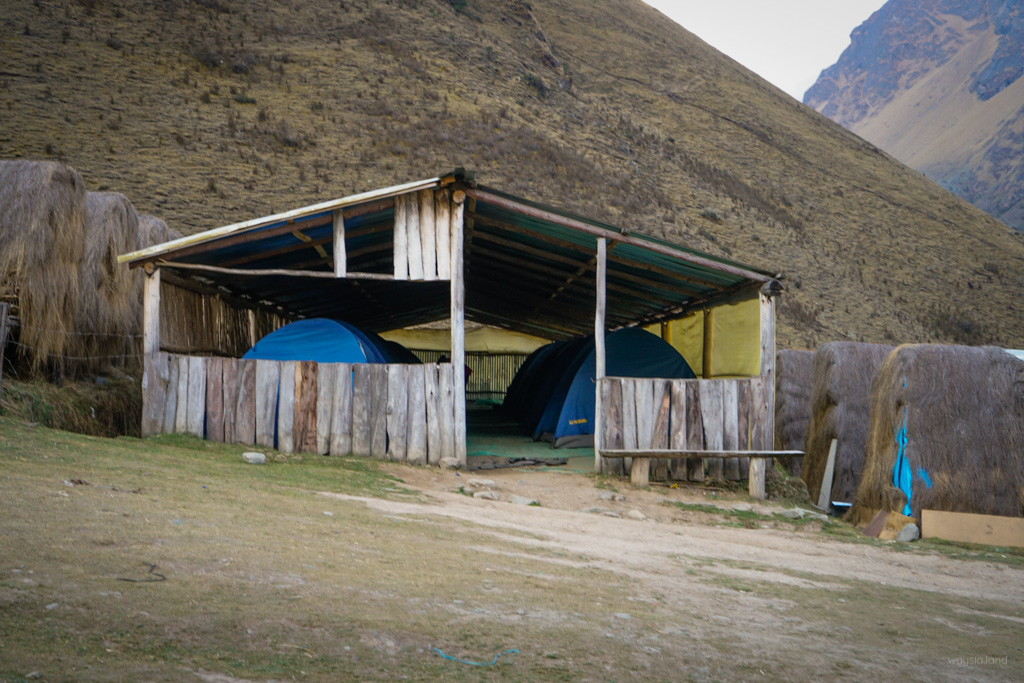
Also sky domes seems to be a trend now. There were several areas with sky domes. Some guy selling sky domes must have gone around to a lot of the property owners and sold them his sky domes. The ones pictured below I believe belong to the Salkantay Trek tour company. I had originally wanted to book with them, at a significant discount to what I paid but they were booked out 2 weeks in advance.
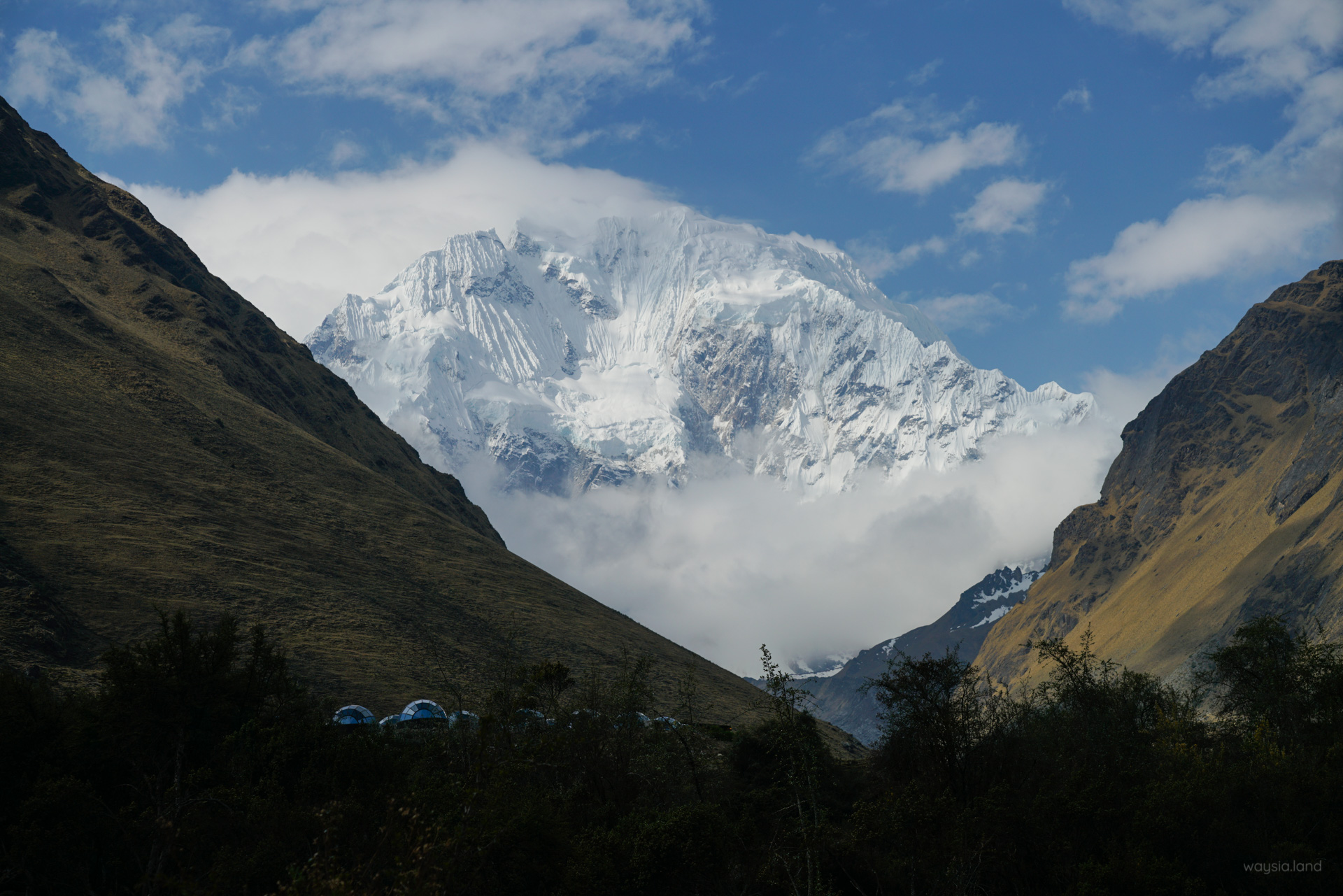
After a short break, we were reminded of the optional side-trek to Humantay (pronounced Woo-man-tie) lake which is also the base of Humantay Mountain.
Given that the majority of the trek so far was on a flat area, I had spare energy and felt compelled to check it out. The side-trek wasn’t long – around 3km return, it wasn’t hard but it also wasn’t easy. Looking back, it didn’t seem that bad, hell just looking at the photo it was more like a gentle hill. But I’d attribute it to it being a long drawn out high altitude gentle hill (about 3850m or 12630ft), on day 1. While I had been at high altitude before in Bolivia and spent the requisite 2 days in Cusco acclimatising, I hadn’t done anything physically strenuous at the time. This was something else entirely.
Zig-zagging my way up, as if that would help, I eventually made it. It did not disappoint. The highlight of day 1 was definitely Humantay Mountain, pictured in the featured image of this blog post.
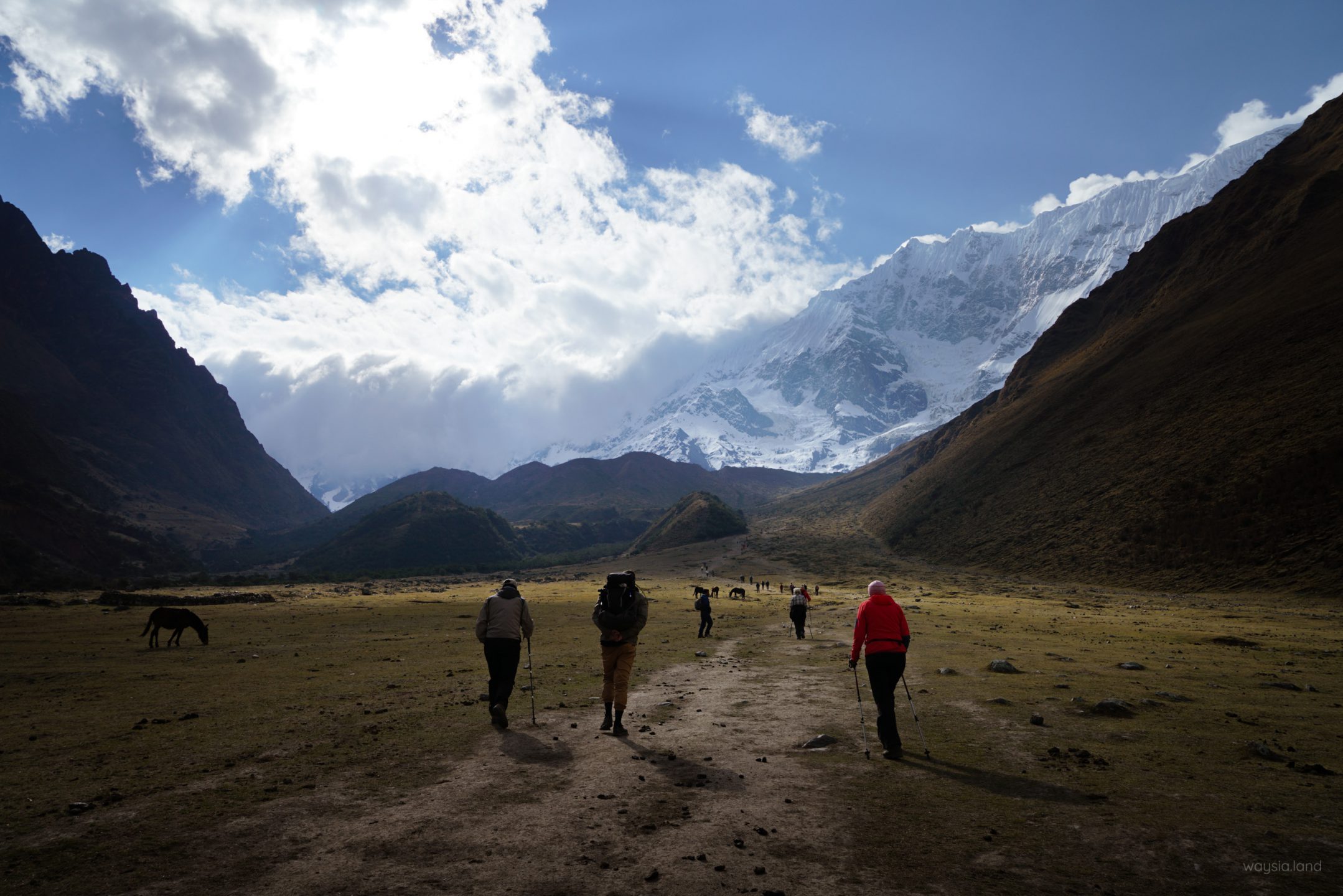
Cody made it to the top first. He previously served in the US Army Reserves and set the pace for me. As we waited for the others we clambered up the surrounding hills for a better view. Eventually, 7 of 8 us arrived at the lake and took the requisite selfies and group shot, with the 8th staying at the camp.
Which brings me to a real concern I had prior to the trek – with varying levels of fitness, how would it work? There was no fitness or acclimatisation test and we only had 1 guide. The accessible nature of these treks departing straight from Cusco means all sorts of people will be on it. Would we have to wait for the weak last person? What if I was that weak last person? (I was not)
The guide handled it surprisingly well. Sometimes he’d walk with the fastest, other times the slowest. If he was walking with the slowest he’d point out a meeting point in advance so we could go at our own pace and relax at the meeting point. Given that the trail is well marked and heavily used, this worked out quite well.
So it turns out going downhill at high altitude isn’t an issue. Any struggles your body had with the lack of oxygen or blood simply isn’t there anymore, or at least not in any noticeable capacity. I’d also say flat areas are similar. As we flew down to camp we were greeted with more luxury. A bowl of hot water (there was no shower and if there were it would be freezing anyway) and a small face towel to sort of clean ourselves with reminiscent of an arrival at a resort in Asia, minus the welcome drink. The towels even had prominent numbers sown onto them, almost as if they were purposely designed for trekking tours so no one would get someone else’s gross towel the next day. It’s the little things.
With nothing left on the plan for today except tea time and dinner, off went the boots and on went the flip flops. This small but freeing act has now become my ritual on campsite arrival no matter how cold. It just feels good. Plus I can air my boots at the same time.
“Tea time!” someone yelled. Every afternoon and around meals it’s tea time. Even though I never really used to drink tea I’ve come to love tea time. After a long days trek, it’s pretty relaxing. Anis (aniseed) or manzanilla (chamomile) is my go-to after-trek tea of choice. Chamomile is definitely hot on any trail so be quick, there’s usually not enough for everyone.
By now we are all quite well acquainted with each other. Our group of 8 was made up of me and 7 Americans; a family of 5 from Texas, another guy from Texas and 1 girl from Vancouver. Even if you haven’t been there I’m sure everybody has an image of Texas in their mind. Over the course of the next few days, mine would be completely turned on its head.
I don’t think any of us expected to eat well on that trek but man did we eat. For dinner, a huge spread of multiple courses including appetising entrees, a range of mains and delicious desserts. Not only that, there was a lot of it too. Although I tried, we never once ate everything. Quality was equivalent to a buffet-style (not a-la-carte unfortunately) dinner at a 3-4 star hotel. It’s worth noting at this point each group has a dedicated chef. I later discovered one of the porters also doubled up as a sous chef.
Unguided tip: I asked what they do with the leftovers since every meal there was leftovers. The staff eat some and they give away the rest they said. Later on, I met people that bought excess food off the tour chefs!
If there’s a photo op moment for capturing the milky way galaxy on this trek, you probably won’t find a better night than on day 1. High altitude + no light pollution are the key ingredients for the best viewing opportunities. Day 2 and Day 3 would have our camp in very small towns with Day 4 in Aguas Caliente. Sadface for me the clouds ended up rolling in.
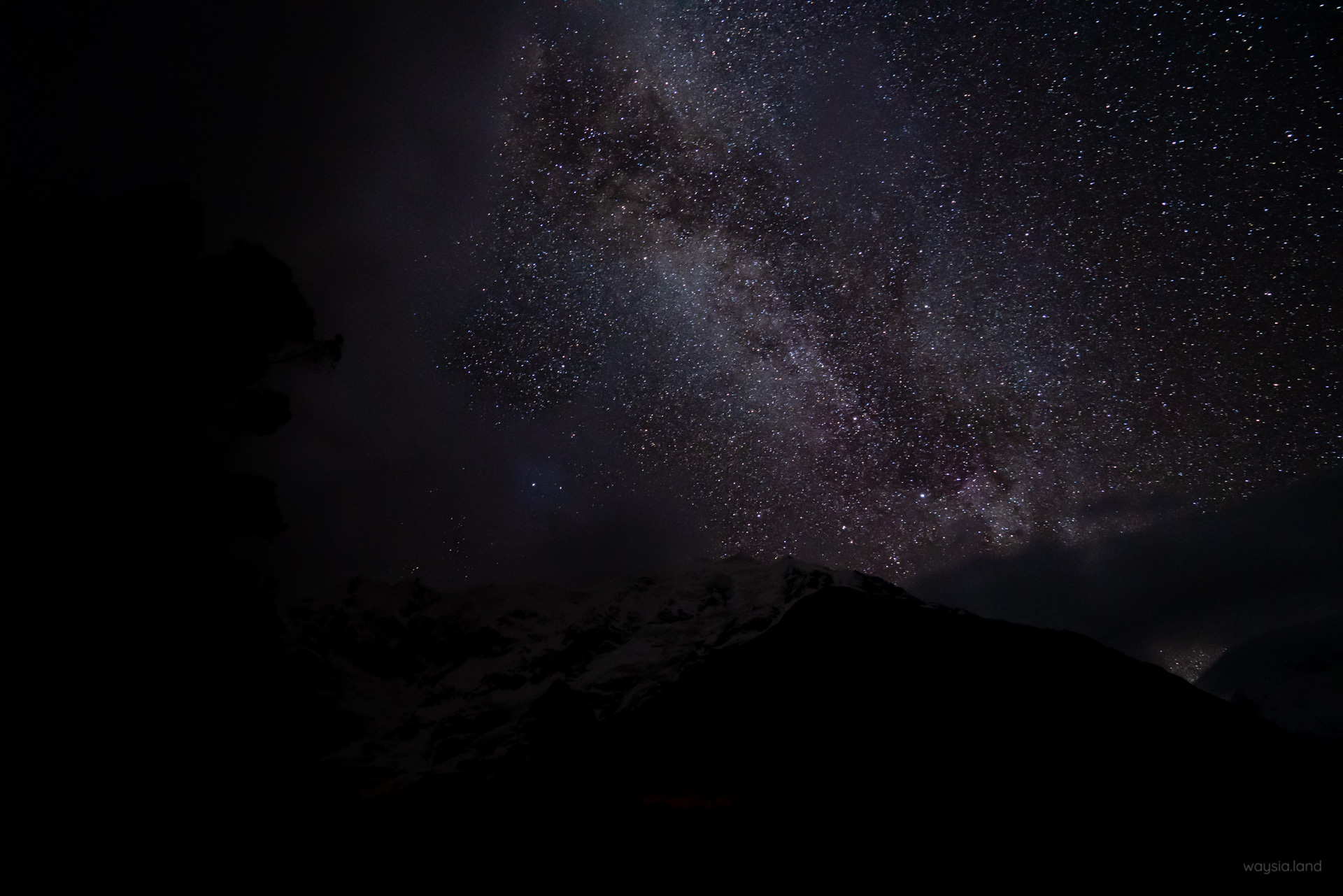
Milky Way photo on a trek tip: Ideally, you’d have a small tripod like a Gorilla Pod but you can get by without one by resting your camera on something stable like a backpack.
Salkantay Pass – Day 2 of the Salkantay Trek
To Salkantay pass (4650m/15255ft) and then all the way down to the cloud forest (3000m/9842ft), today would be the longest day of the trek – 21.2Km (or 13.5 Miles) boasting some of the best views the trek had to offer.
Waking up to someone banging on my tent at some ungodly hour, it was time to start the day. Offering a cup of hot coca tea along with my hot towel was a surefire way to not suffer my non-morning person-ness. Over the next few nights, this understanding would continue.
I didn’t wake up from an altitude-related splitting headache like during my first encounter with high altitude at the Bolivian Altiplano (4000m to 5000m). Things were looking good. In fact, asides from the oxygen starvation struggle going uphill, I didn’t experience any issues after that incident. Maybe it was the piles of coca leaves, coca tea and coca candy I was consuming. 🍃
As we set off for Salkantay pass on the immediate steady incline, I definitely regretted gorging on breakfast that morning. I don’t know why I ate so much, perhaps the thought of needing energy later or subconsciously trying to recoup the expensive tour fees.
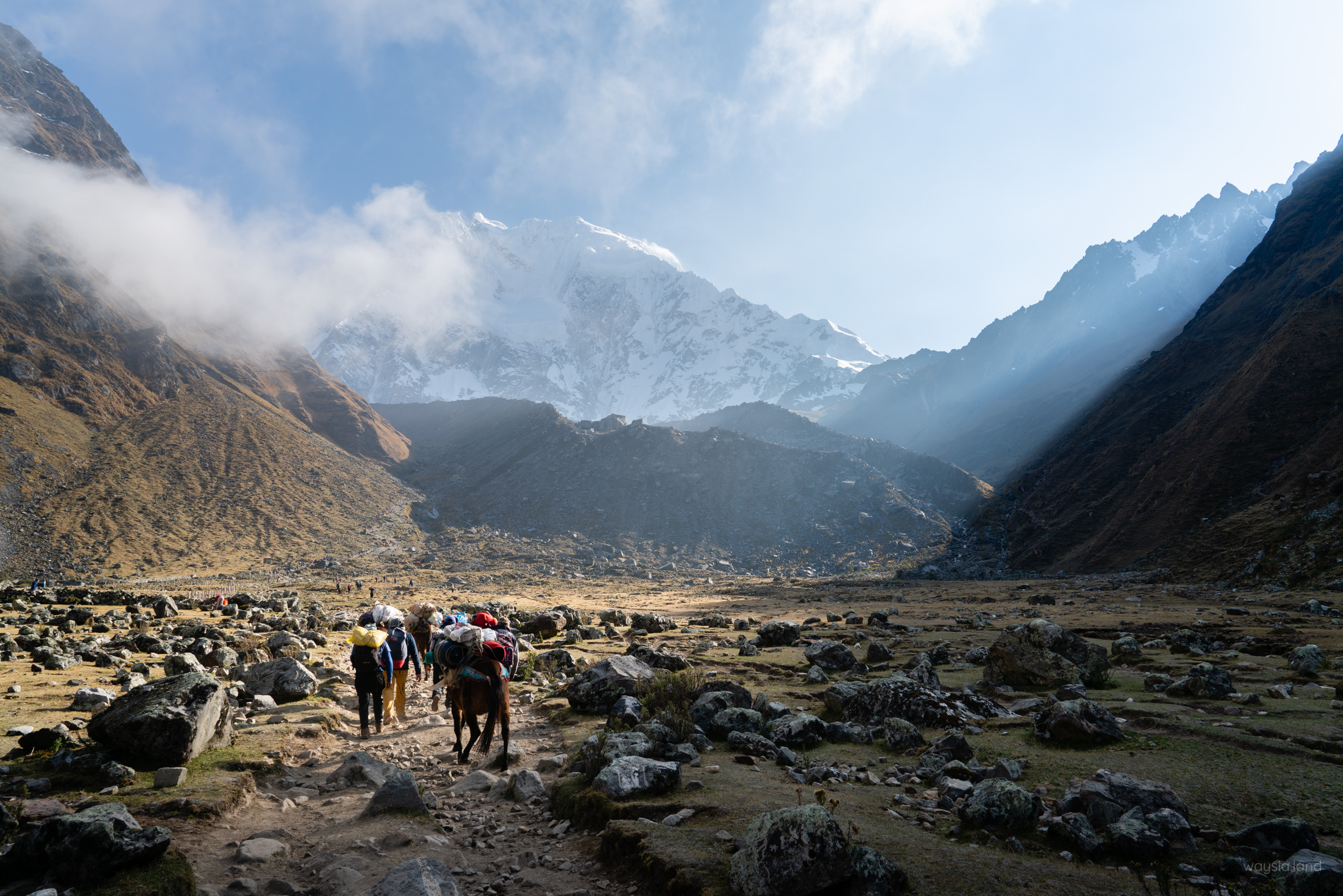
As we make our way up to the Salkantay pass, this is where you truly see how many other people are doing the Salkantay trek to Machu Picchu that day. I’d estimate numbers to be in the low 100s-200s. Who knows, if it hasn’t already, in a few years that might overtake Inca Trail in popularity due to the latter’s maximum quota.
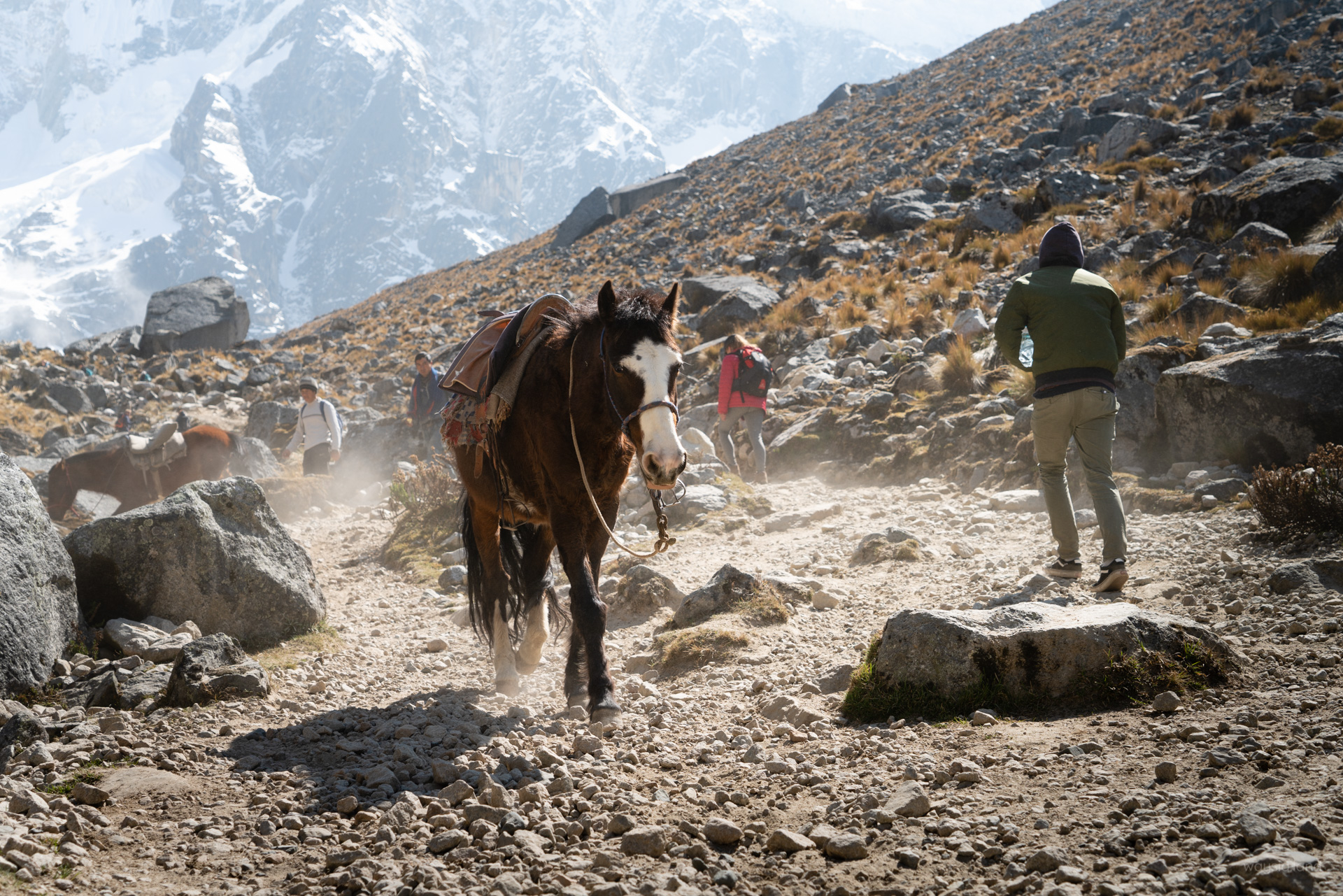
After breaking through the single file madness with a few more grey hairs, the trail opened up to a lush green field. Finally, after a little bit more, we reached the Salkantay pass. And what a sight to behold.
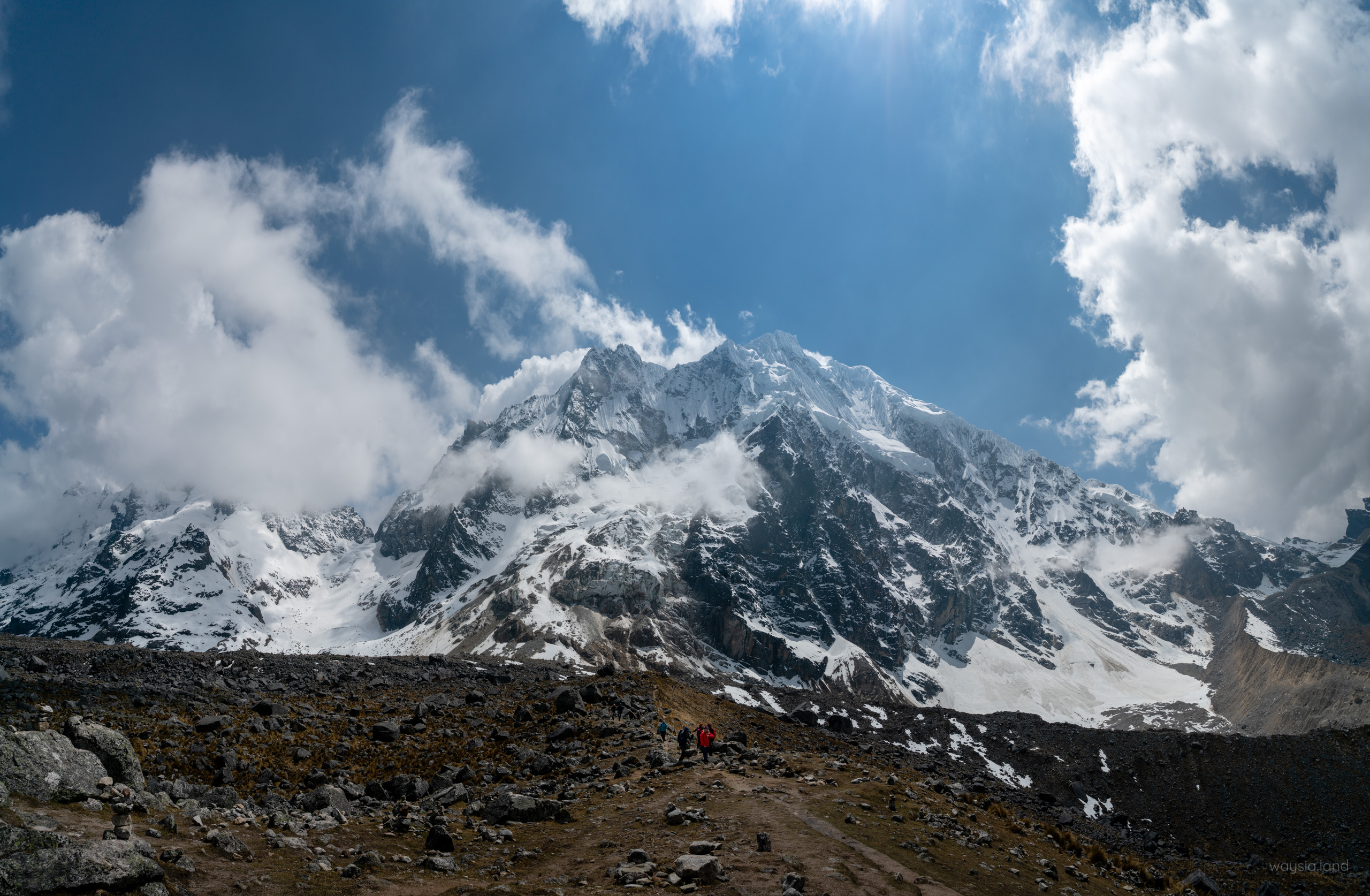
Gloria, 1 of the family of 5 decided to take the emergency horse to the next campsite. Another victim of high altitude. Given the terrain we were on, I don’t know what felt safer, high up on the horse climbing a steep mountain or standing safely on the ground.
After a short break, dark clouds started rolling in so it was time to move on. To the other side of the Salkantay pass was a lush green valley that reminded me of a scene out of a movie like Narnia, contrasting starkly with the jagged ice and rock of Salkantay Mountain.
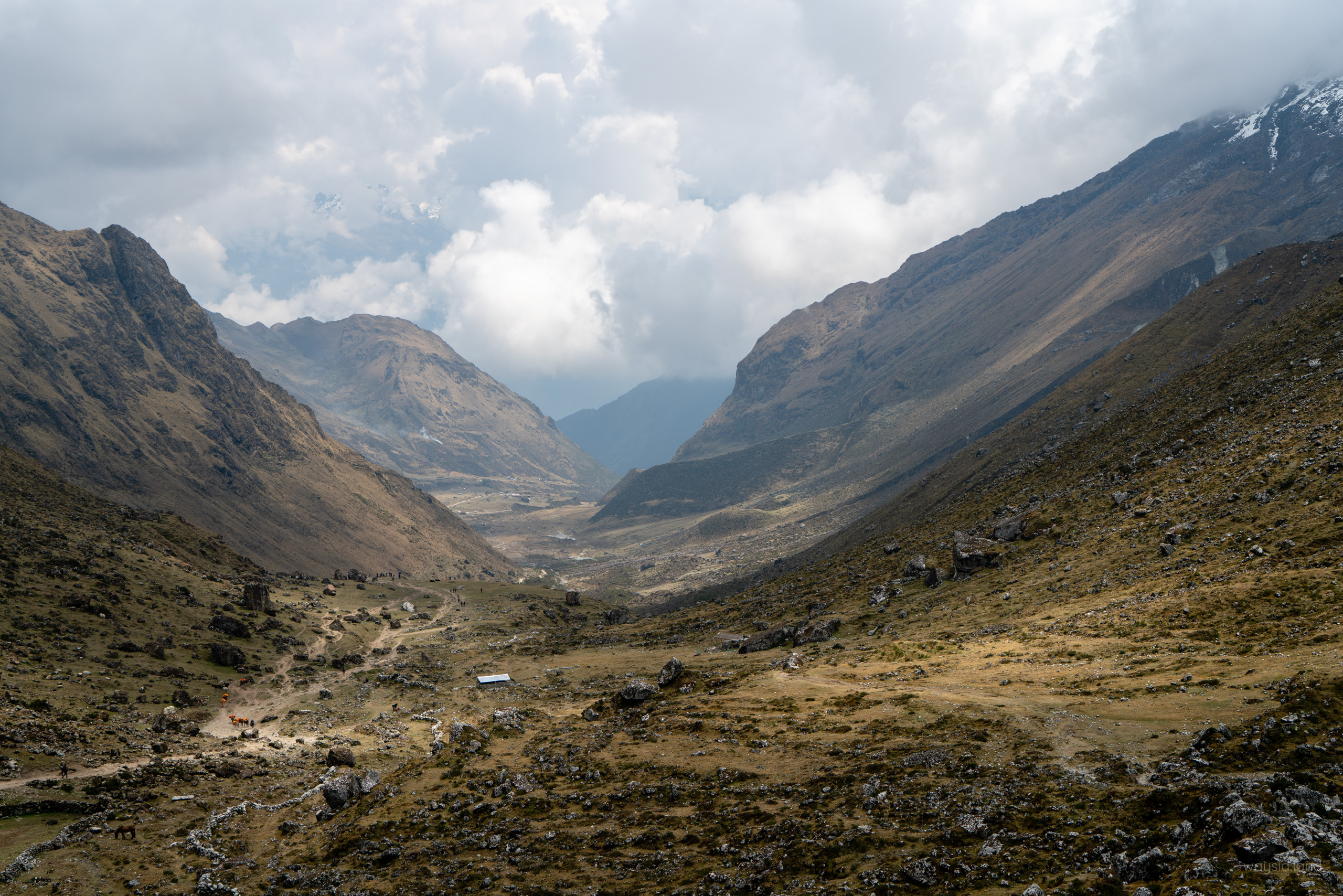
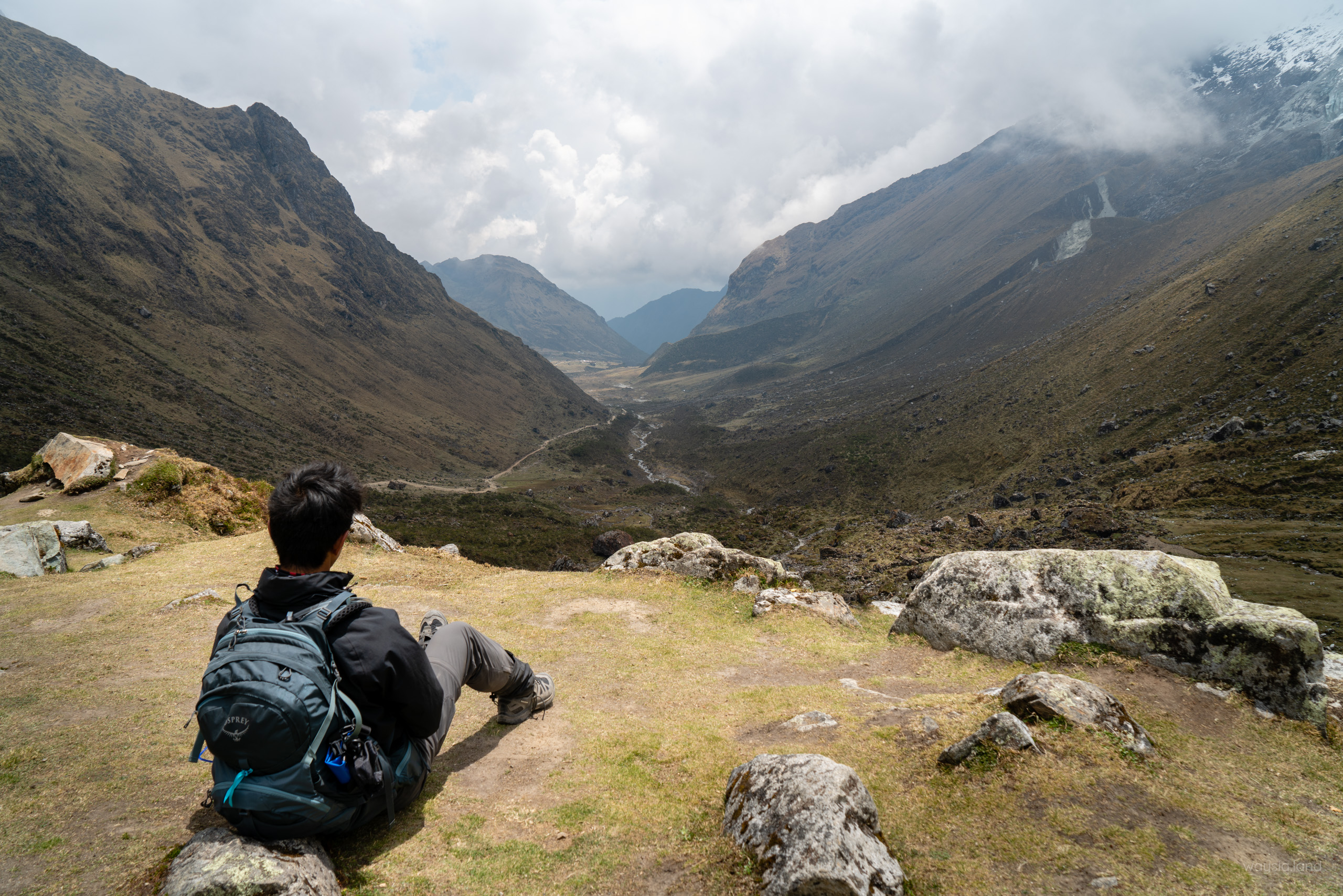
Down by the river a short while before the valley descends into the cloud forest, the porters were already setting up a lunch tent. No packed lunch for us, this was going to be the works, almost akin to last nights amazing dinner.
As they rinse cooking equipment in the river I look around with hesitation at all the farm animal crap within an arms reach from the water. This river might be coming from a glacier but it was running straight through farmland. Thinking I was somehow going to will myself sick, I turned away and shut the thoughts out. These guys do this every day they must know what they were doing I thought. Thankfully the water we drank was boiled, given that I was drinking about 3 to 3.5L per day. In any case, I had with me a Steripen Pure+ UV filter thinking that we had to filter our own water for the trek – we didn’t.
After our lunch fit for a Viking banquet, we descended into the mystical cloud forest. Part way down was actually a small bar. Needless to say, we stopped for a beer 🍻. My first Cusqueña Trigo (wheat beer), ordered by mistake too.
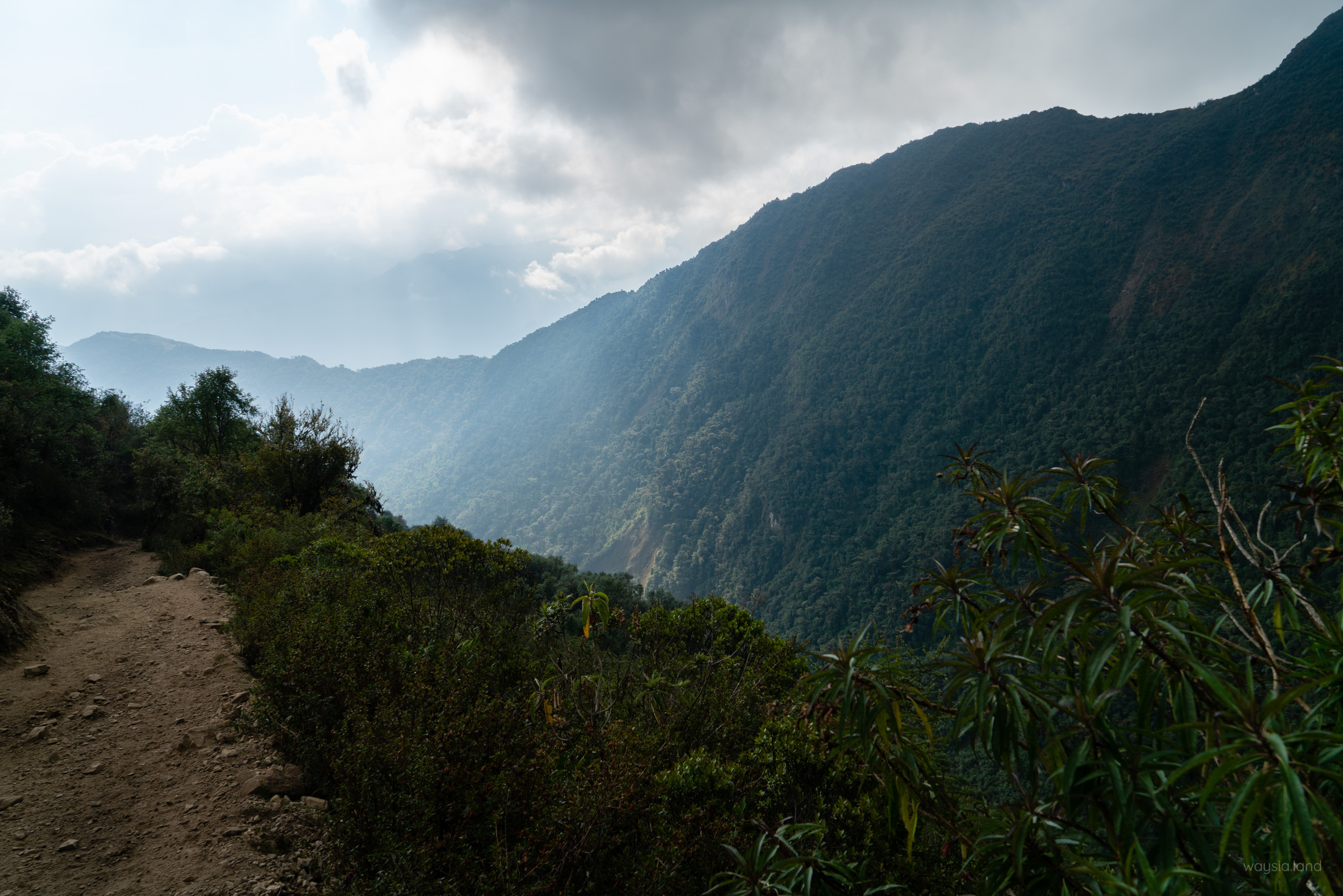
Hot springs – Day 3 of the Salkantay Trek
Day 3 of the Salkantay trek is what I would call a ‘filler day’. Day 1 had the magnificent Humantay and Day 2 had the glorious Salkantay Pass along with the magical descent into the luscious cloud forest. Day 3: passionfruit orchard? hot springs? Hmm…
In the morning we bid farewell to the horsemen and gave them their tip. The horsemen are the people who carried all our extra personal equipment we didn’t want to lug around ourselves and the cooking/camping gear. Their job was now done and they would now turn around to go back the way we came, to do the same thing all over again for the next group of people. With road access to future places, all the heavy equipment would now be moved around by a van.
So… tipping.
On the tour brochure and at various stages of the trek you are reminded about tipping, it’s a tradition and that it is entirely optional.
But damn.
The process sure goes out of its way to make you feel like a dick if you don’t tip.
For starters, the farewell to the staff is labelled a ‘tip ceremony’. Rather than a farewell where only goodbyes must be exchanged, being a tip ceremony gives this event a cultural foundation to guilt you as an outsider (yes you filthy infidel), with. Imagine a ceremony without the one very thing it is all about. Sacrilege.
Secondly, the tip is group based and not individual. On the surface that may not seem like its an issue, but it is, trust me.
If all else fails, pit them against each other.
I don’t know if that’s a real quote but it sounds appropriate.
There are two ‘fair’ methods to split up a sum of money to be paid in a situation like this:
- Divide a total evenly
- Everybody pays what they are comfortable with
While seemingly the fairest, dividing evenly never works. You basically have on one end of the scale, Americans (not necessarily the ones on this trek) wanting to empty their wallets, that one guy from Australia not wanting to tip anything because “hey you said it’s optional” (maybe the one on this trek) and everyone else in between, all with varying incomes and expenses. If the amount that needs to be paid is above the threshold of whatever they’re willing to pay (including $0), your group will have a problem.
Why doesn’t everyone just tip what they are comfortable with? There is a recommended amount to tip each person in a tiered level with the 1 chef at the top, 2 porters in the middle and 3 horsemen at the bottom.
If everyone tips what they want and the ‘recommended’ amount isn’t reached, the group has a problem. You will also definitely feel like you’re judged by whoever is on your tour if you want to put in less or nothing for this optional tip. Keep in mind this discussion happens in front of your whole group (no staff present), there is no discreteness here.
What typically happens is something like this. Evenly never works and people end up putting whatever they want. Some put in more than their threshold with a feeling of disdain. And one guy in the group will end up carrying the team by putting in extra to make up any shortfall, forever resenting the ‘cheapskates’.
With the mess of sorting out who pays what and how much finally over, you can now relax. Right? RIGHT?
Wrong.
The final nail in your coffin lined with tips you didn’t want to give out is… don’t forget that this is a tip ceremony. The single envelope is handed over as a group and everyone is around to see it. Put in nothing or less than others? Enjoy the credit, dick.
And you know what’s worse than a tip ceremony?
Two tip ceremonies.
To put things in context this particular tour operator’s 5 day 4 night trek has a base price of US$695 – just shy of AU$1000. Excluding ‘optional’ tips and US$50 for the return transport home. This makes it one of the most expensive non-private guided Salkantay Treks available.
With the first tip ceremony out of the way, we headed off and eventually arrived at a yellow passionfruit orchard. At the back was a small shopfront you could buy some of these delicious golden fruits at.
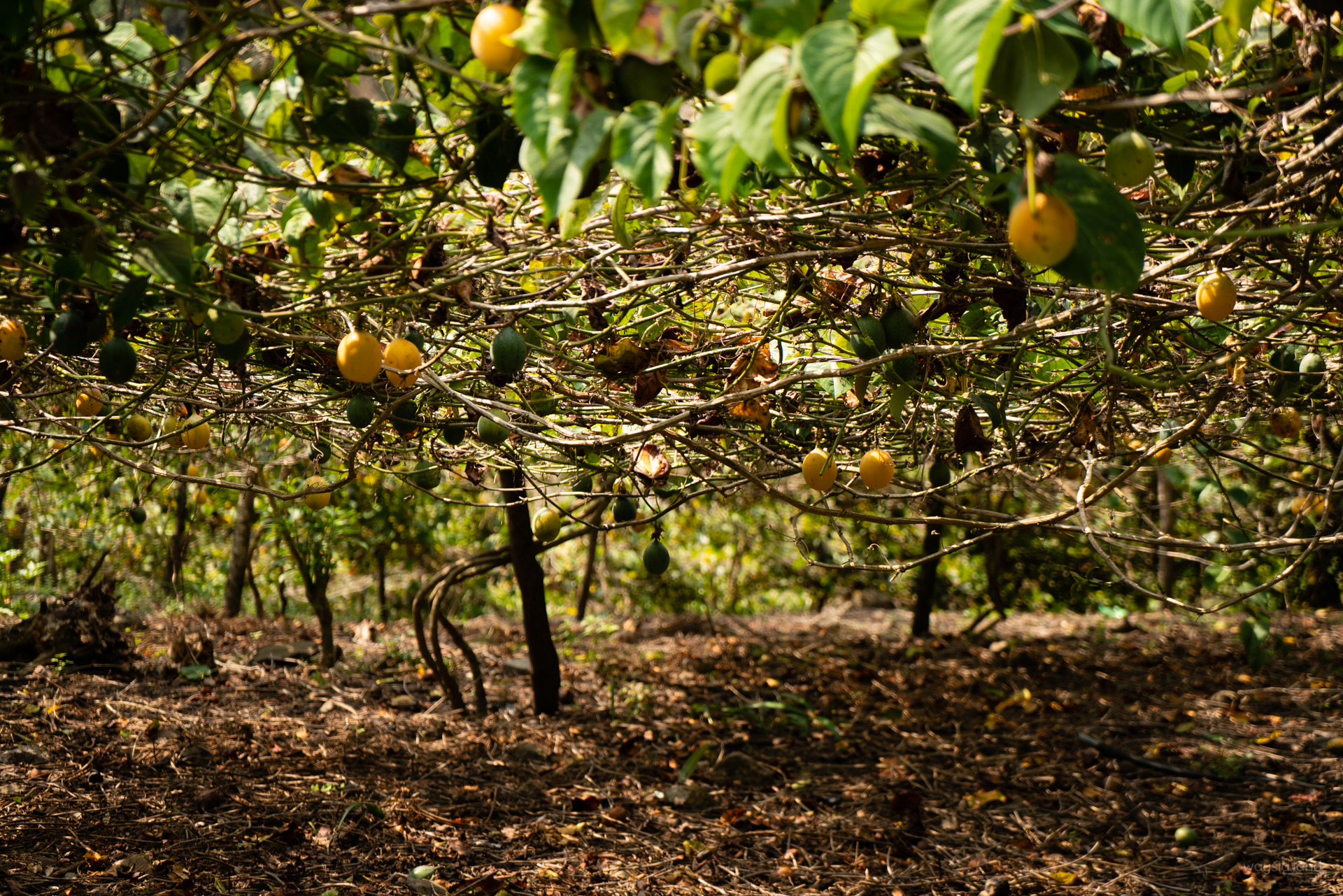
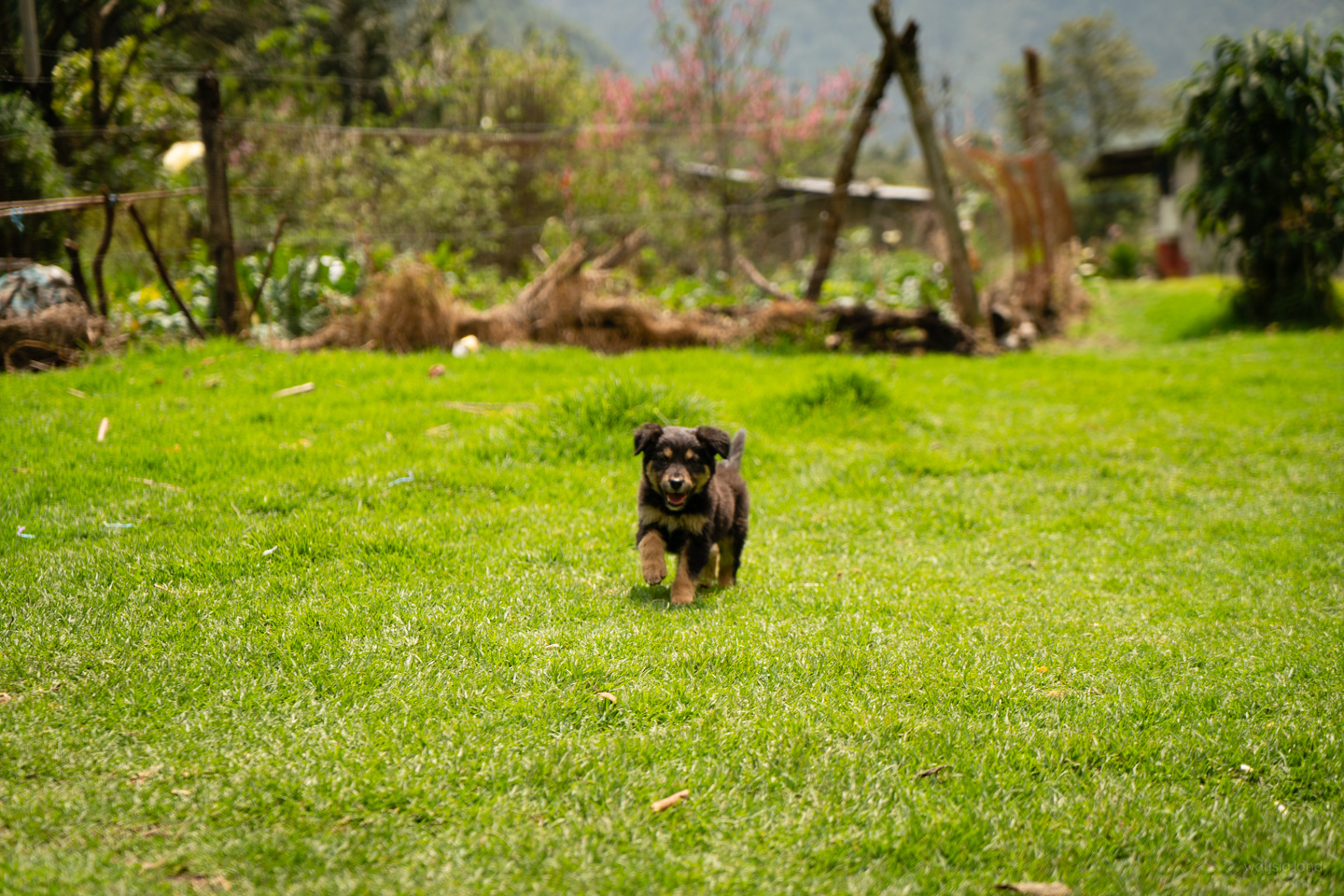
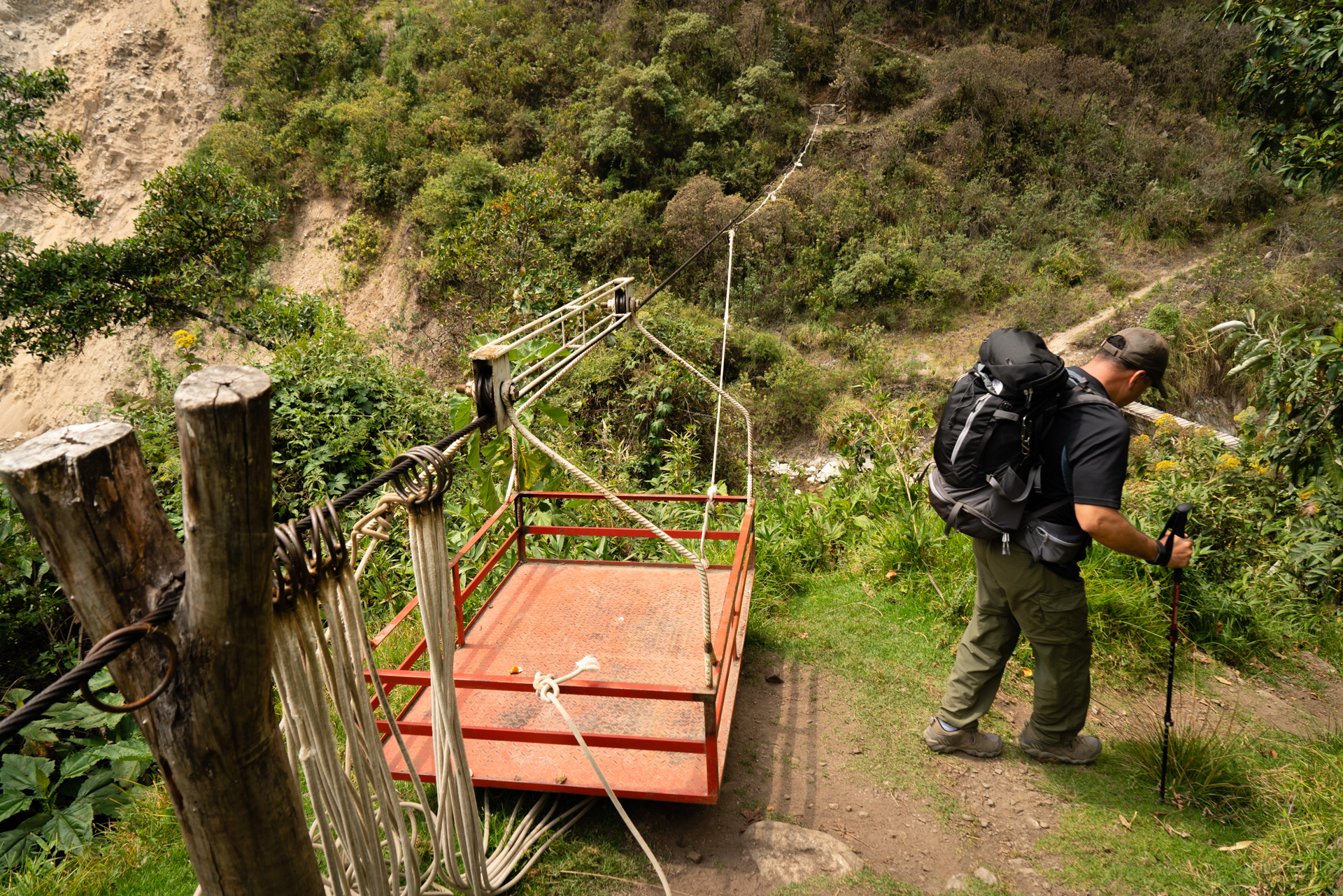
From here on the disappointment set in. To get to the La Playa campsite for the night, it was basically a few hours of walking along a dirt road, not a trail, a dirt road where an occasional truck or van would pass by.
No opening out into an expansive valley, no breathtaking mountain pass, nothing.
To rub salt in our wounds, on the opposite side of the valley to us was the actual hiking trail to the town.
Closed to our group (but open) due to avalanche risk we were denied. As we walked almost parallel to another group on the trail the feeling of jealousy set in, or maybe it was the feeling of relief who knows.
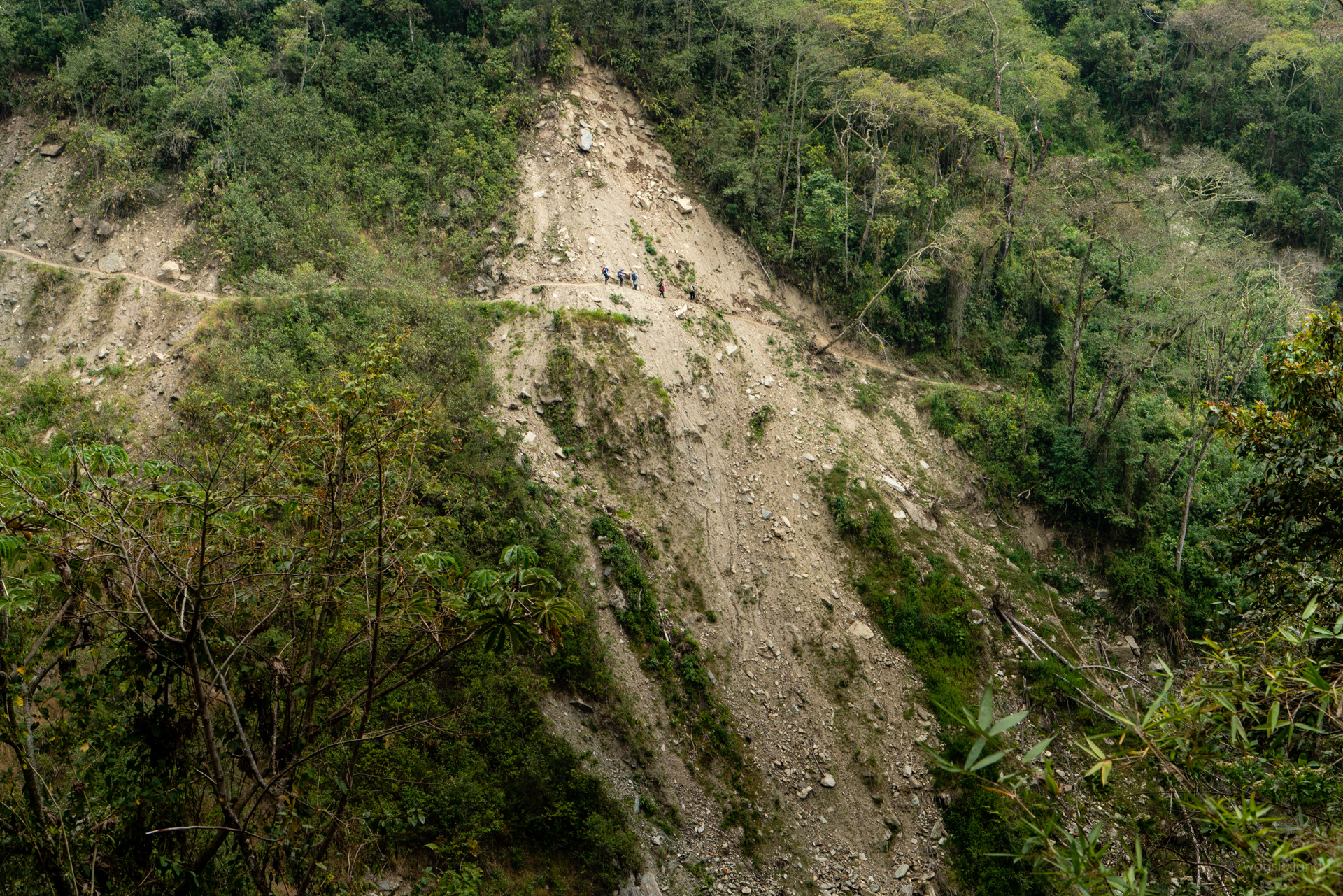
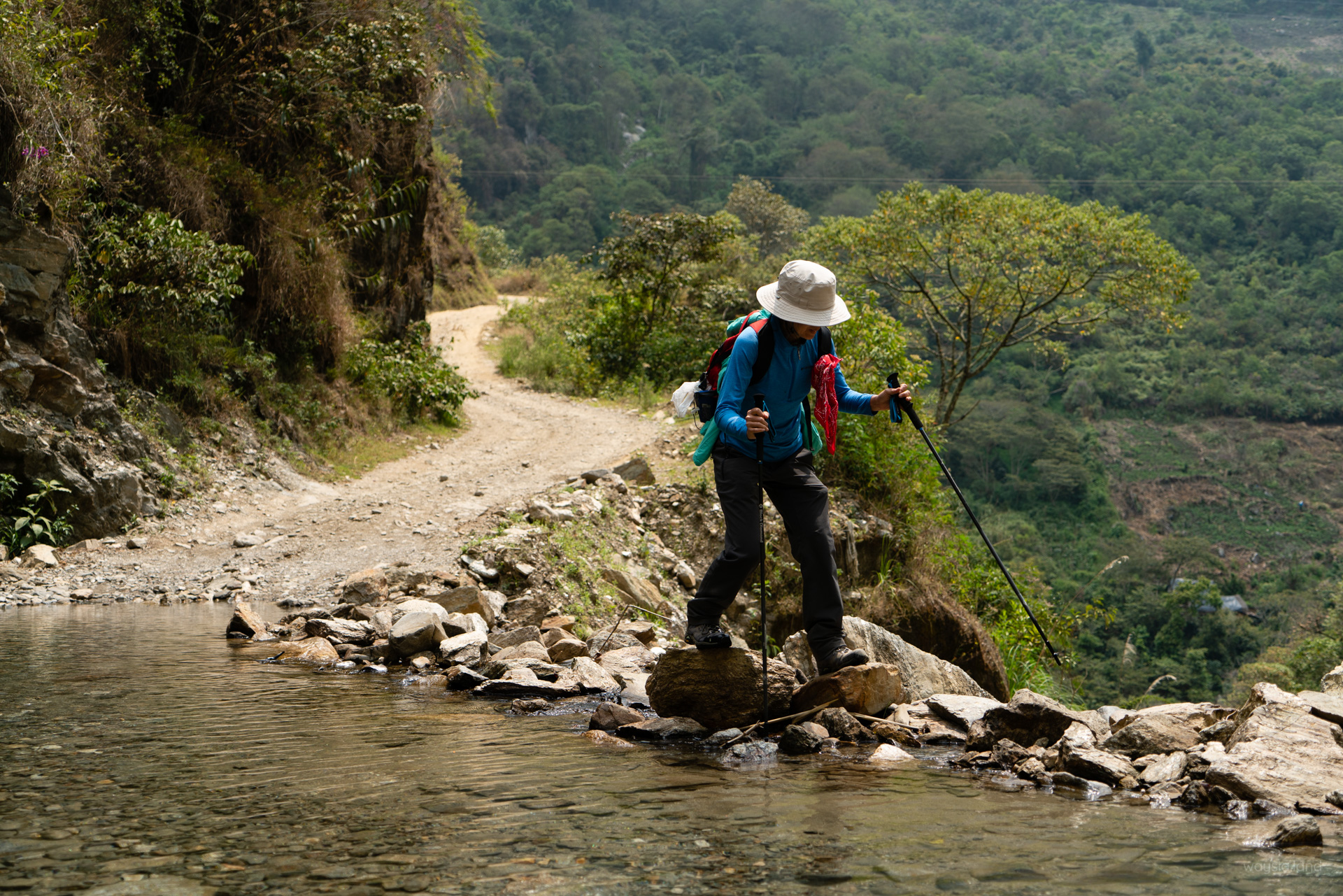
After some more dirt road, of which I’ll spare you the edge-of-your-seat details, La Playa was in sight and we could see our tents already set up. Conveniently there was a store attached to the campsite. Beer! 🍻 Solves all the problems. Gloria, having accepted her fate on the emergency horse had already arrived waiting for us, in a hammock to boot.
The emergency horse is a spare horse that normally travels with the porters in case a group member needs it. Injury, acclimatisation issues, laziness, etc. Although at this point, it turned into a van as the horsemen went back.
Last stop for the day was the optional natural hot springs of Aguas Termales Cocalmayo de Santa Teresa (I didn’t remember any of these random names, I had to look them up).
As we all emptied our wallets for this side trip (around AU$15 per person just for transport), to the same campsite owner, I couldn’t help but wonder what a sweet little business set up this guy has.
One long and bumpy ride later, the soreness that comes with 2.5 days of trekking and bumpy van rides melted away as I eased into the pleasantly warm natural spring waters with not a care in the world.
Aguas Calientes – Day 4 of the Salkantay Trek
This was it. The penultimate day where we would arrive at Aguas Calientes at the base of Machu Picchu. The day which some would call the unofficial end of the Salkantay Trek.
Back in the briefing, after we had paid, of course, we were informed that this section of the trek could be ‘rained out’ and if that happened we’d have to hop back in the van and bypass nearly the entire route for the day. So thank f**k the weather couldn’t have been better, I was dreading this moment since then. With hopes and spirits restored we set off.
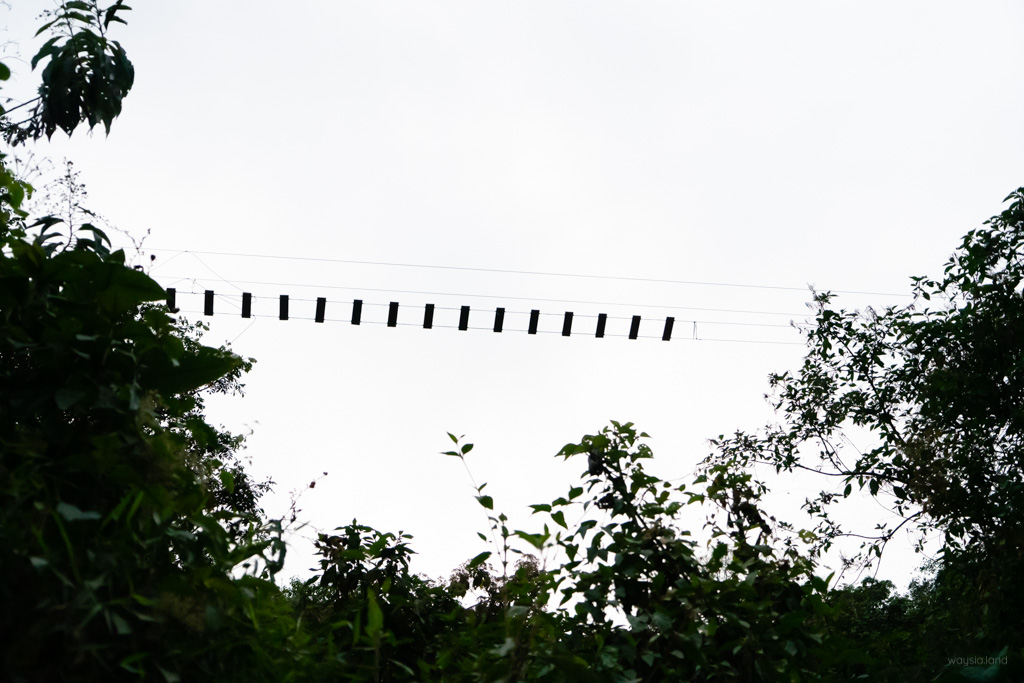
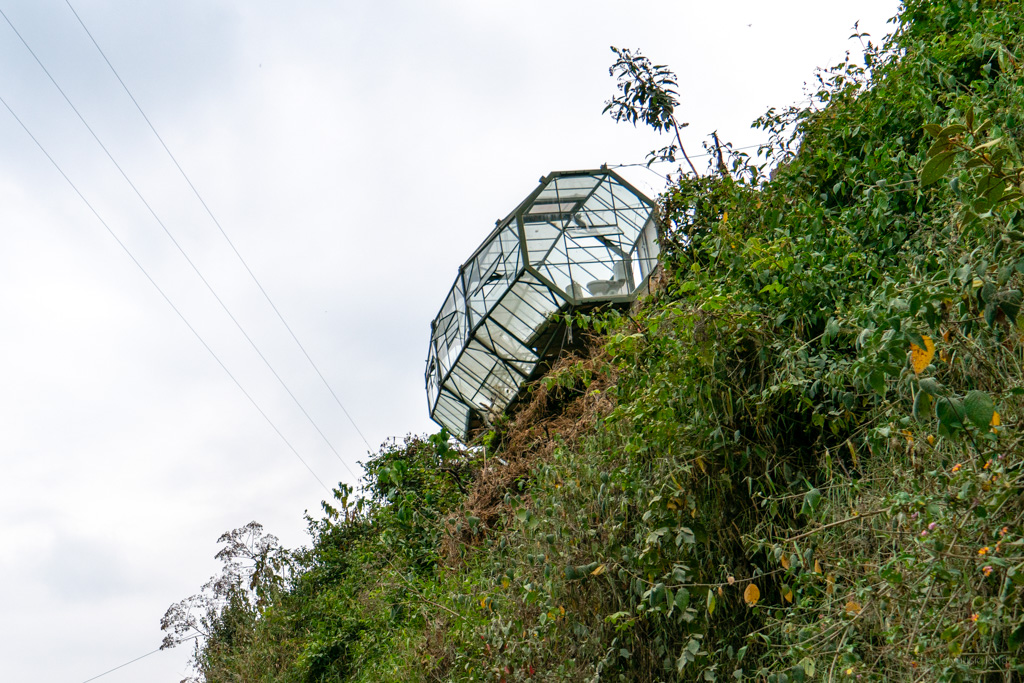
Today would have us start by climbing up an old but well maintained Inca trail to the site of Llactapata. Not the Inca Trail but an Inca trail none the less. Turns out there is a network of about 10,000Kms worth of Incan trails – who knew?
Not long before starting the climb up we stopped in our tracks, in front of us, lay bowls and jars of coffee beans in their various states of processing. Coffee plantation.
Ugh, I thought. Reminiscent of the Bali ‘coffee plantations’ tourist traps, the set up was the same. A demonstration of traditional techniques, followed by a tasting sample, followed by coffee that you can buy, and you probably wouldn’t have even stopped there if it wasn’t for the guide making you stop there.
But was it different this time?
Peru isn’t known for its coffee like it’s coffee producing neighbours but it does reside in the coffee belt. Turns out delicious coffee can only grow within this region. Here on this part of the Salkantay trek, I could see coffee trees all around, belonging to the families of the area (allegedly) who combine into one big coffee producer. Come to think of it, I don’t recall seeing or ever being shown a coffee tree in the Bali plantations. Perhaps they had some ‘out the back’.
The coffee wasn’t bad. It also didn’t come with any gimmicky flavours added like it’s Asian cousin. I didn’t plan to buy any but I ended up caving in the end. Instant regret. Not because I felt scammed but because I now had to carry the damn thing with me. Not only for the rest of the trek but all around on the rest of my entire bloody trip.
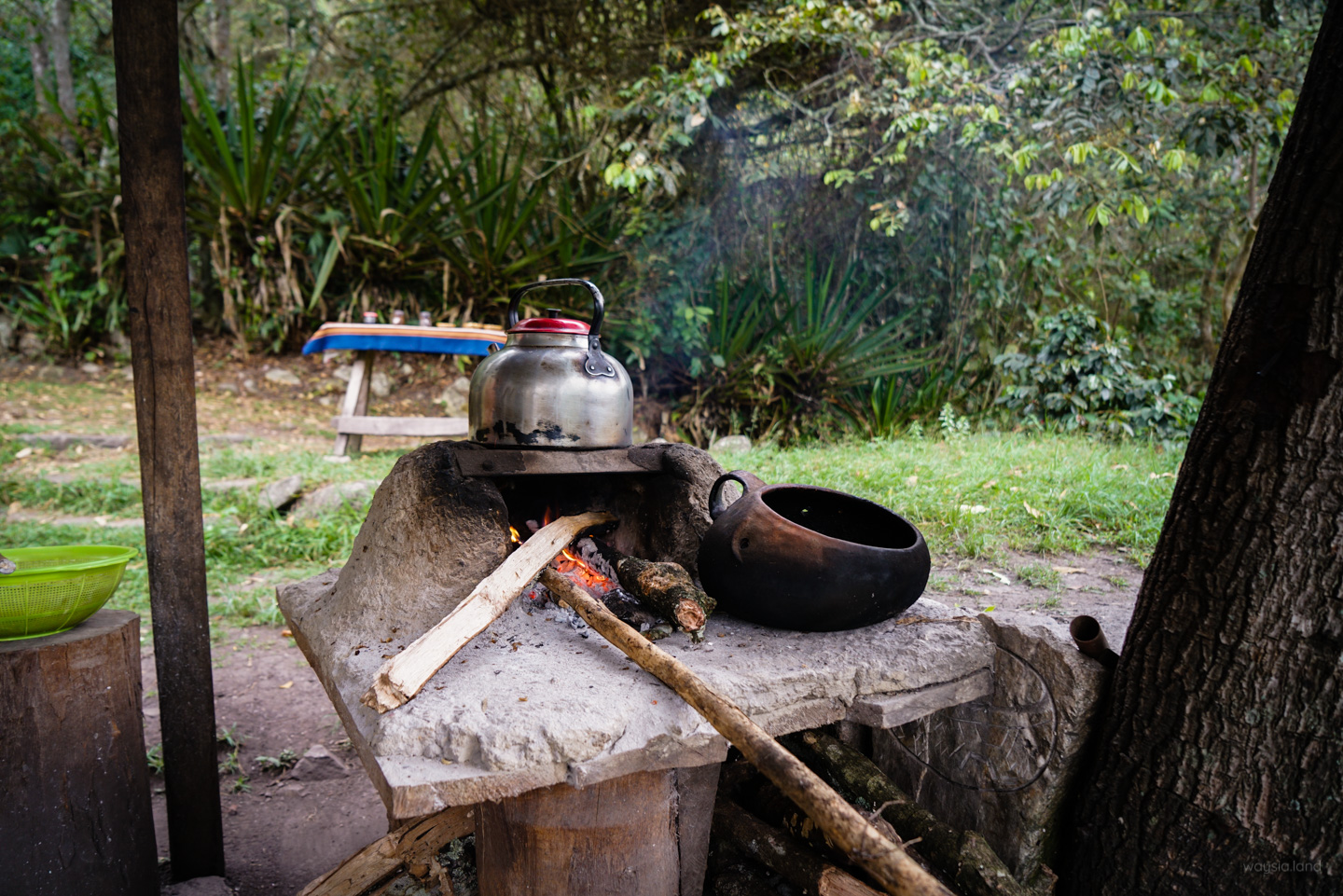
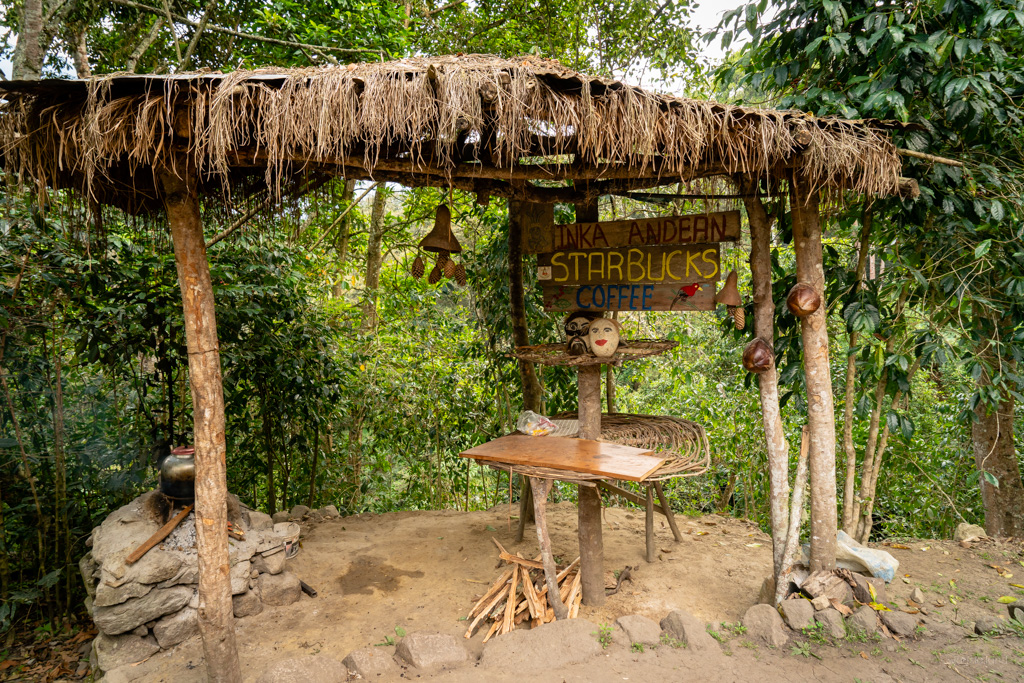
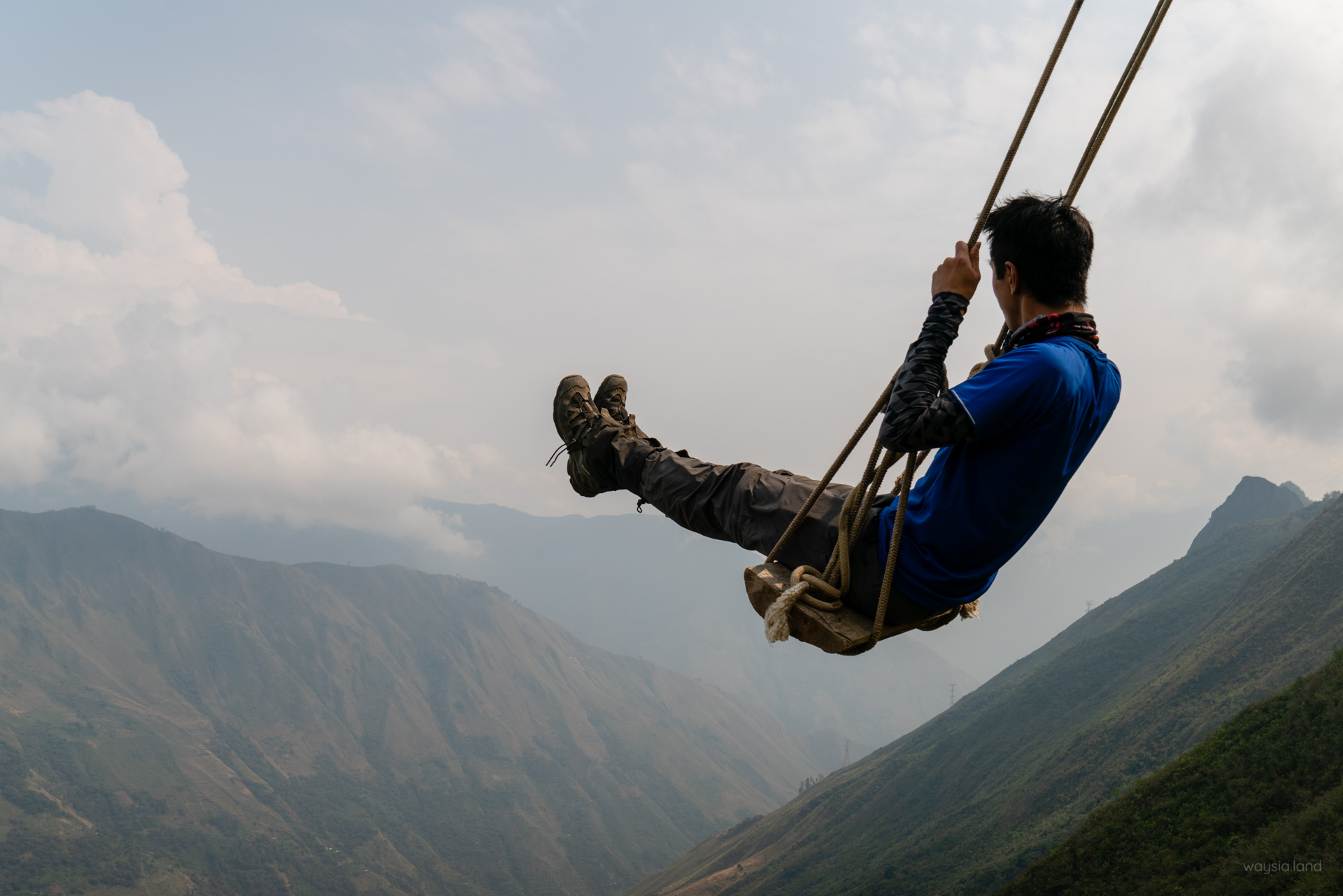
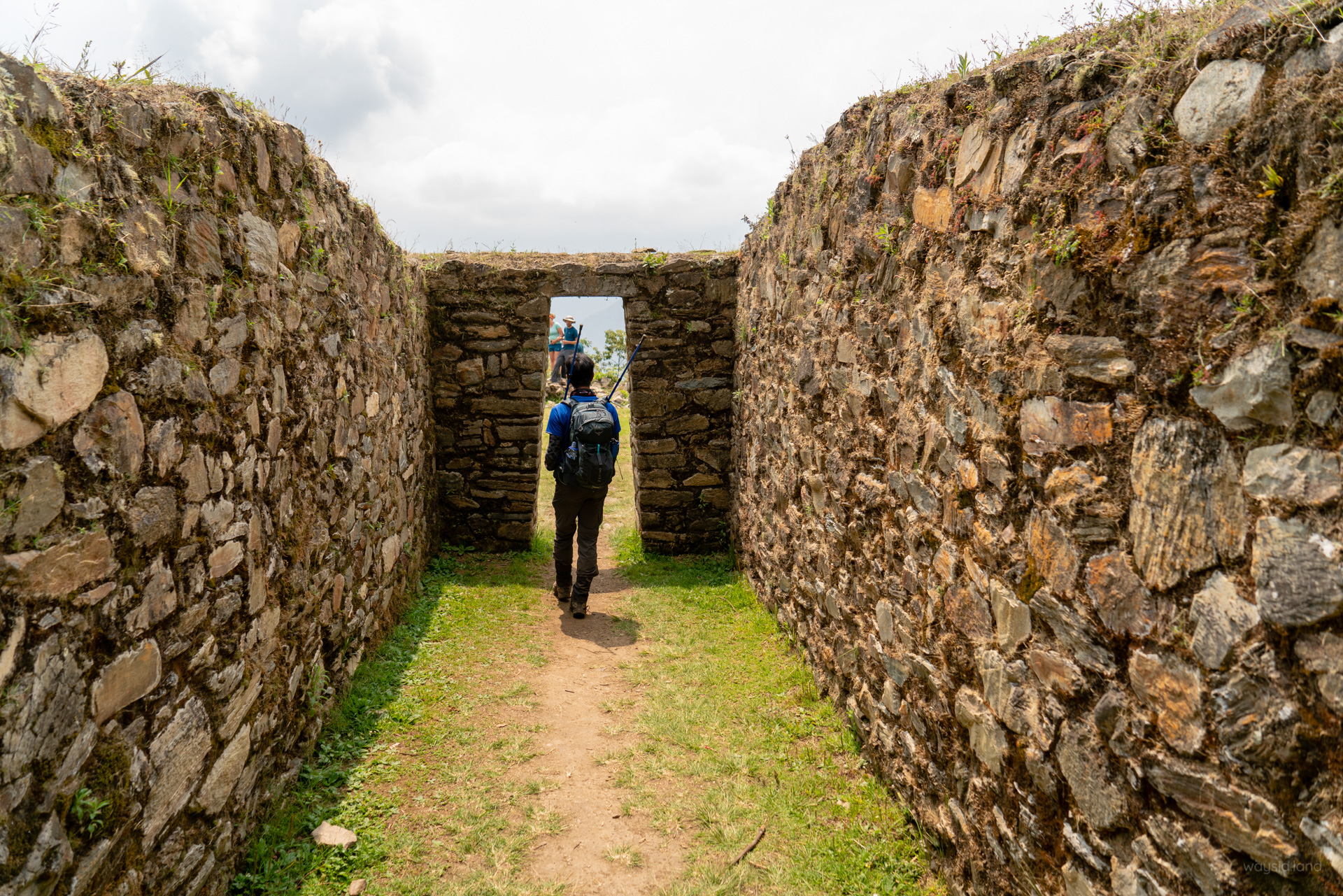
So it turns out there’s another Sun Gate (and more as I later discovered). Here I was thinking the one on the famous Inca Trail was the only one. People keep referring to it as The Sun Gate.
“I’m just on my way to Machu Picchu passing through The Sun Gate. How are you getting there again?”
😑
While looking like a seemingly non-descript slanted doorway, Sun Gates were constructed so that on a single day of the year, the summer solstice (sun is highest in the sky and longest daylight, around 21st Dec), the rising sun will pass through the gate like on something from out of Indiana Jones (revealing treasure?).
When looking through this Sun Gate you can just barely see Machu Picchu in the distance.
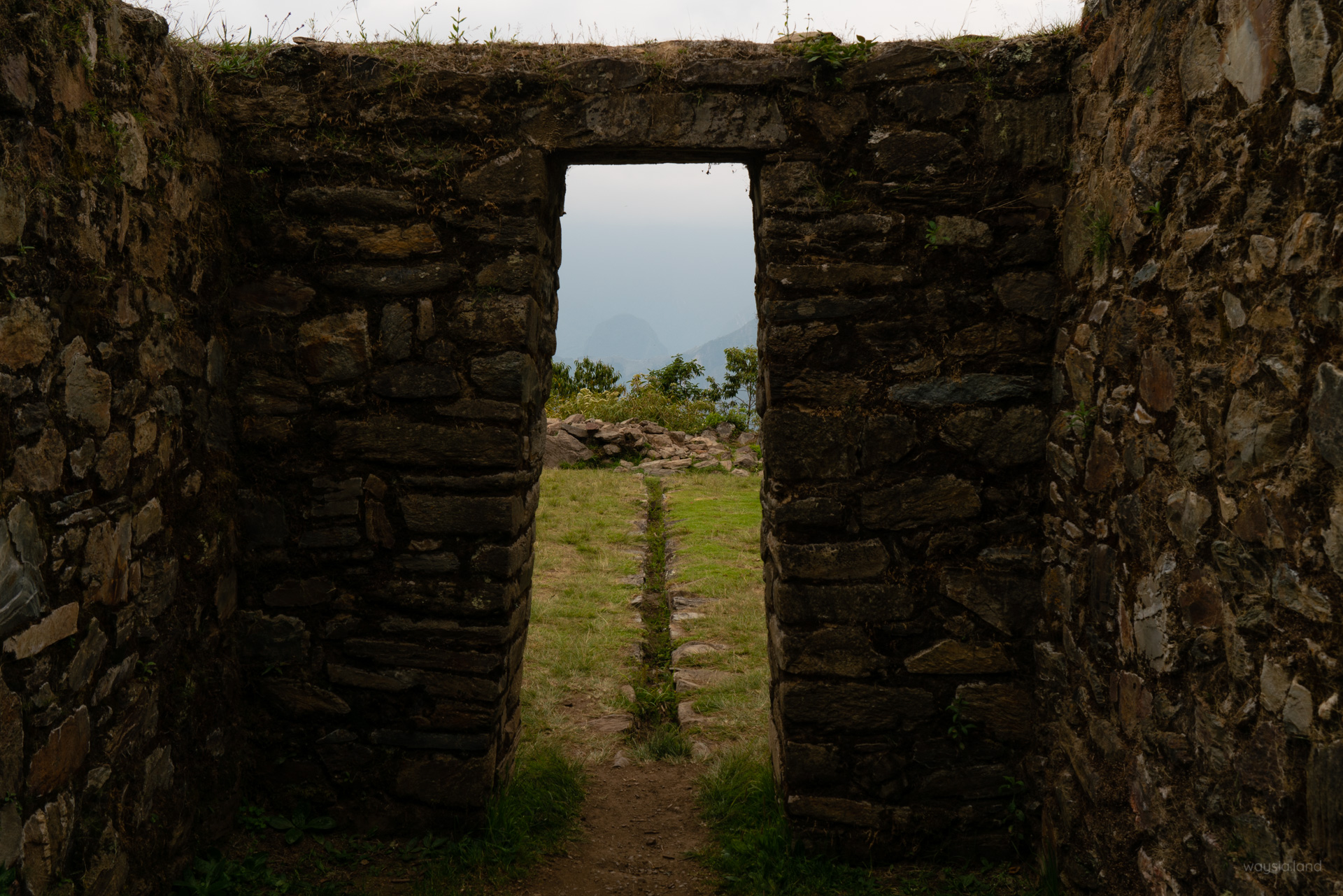
Wait, what?
Machu freakin’ Picchu!
3.5 days later we finally got our first glimpse. The end was literally in sight.
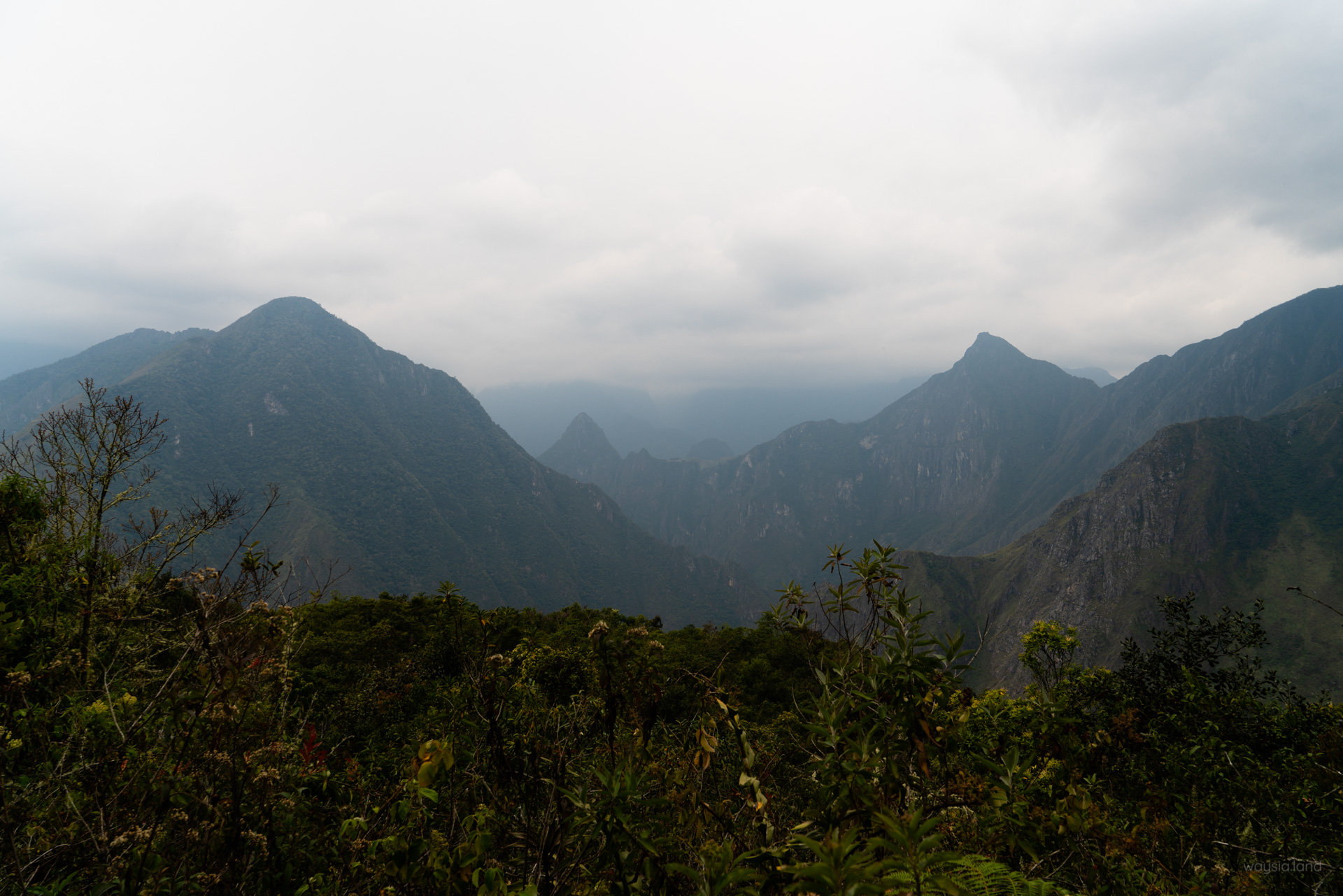
It felt almost like a page that has been taken straight out of Lord of the Rings.
Except I wouldn’t have to wait till the next year for the conclusion.
After a brief history lesson, where we decided it would be a good time to eat our last passionfruits, as a sort of victory passionfruit, we set off down the other side of the mountain and eventually arrived at the Hidroelectrica train station for a lunch break.
There were campsites around at the top and if you were going to do this trek unguided, here would have great views.
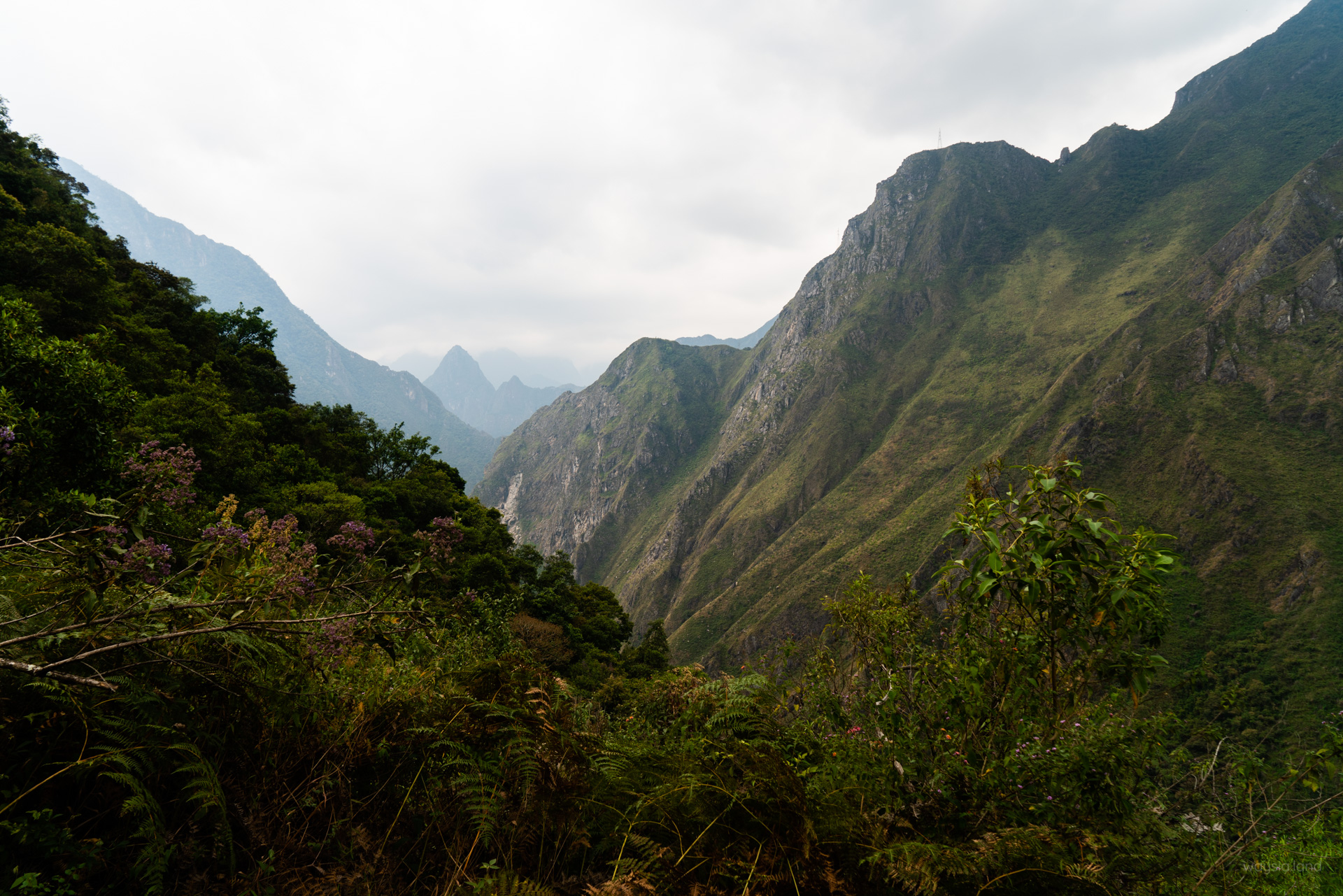
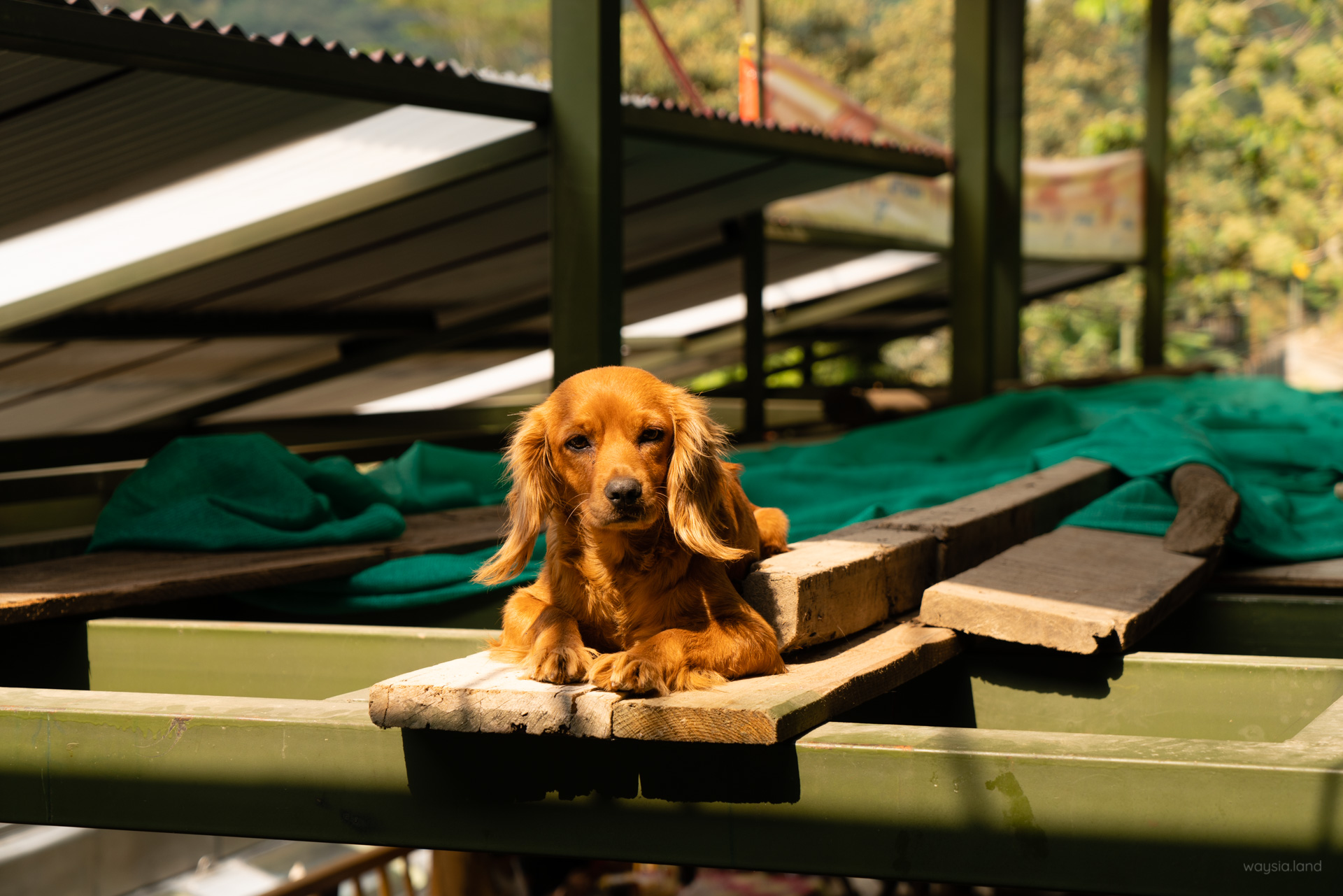
Hidroelectrica is where a lot of people wind up. Whatever serenity there was in the trek up until this point is now gone. Here you will run into all sorts of people, not just from those doing the Salkantay Trek but also day hikers to Machu Picchu and people taking the much cheaper alternate route from Cusco. The expensive option being the more standard tourist train at 3x to 6x the price.
After eating our final cooked meal for the trek (we were eating in town tonight), we held the last tip ceremony for the last 3 remaining staff excluding the guide – the chef and the two porters.
With both the tip ceremonies thankfully now behind us we ventured down the railroad to Aguas Calientes. As I walked on the tracks, in my mind, I couldn’t help but wonder if the guide would get one later too…
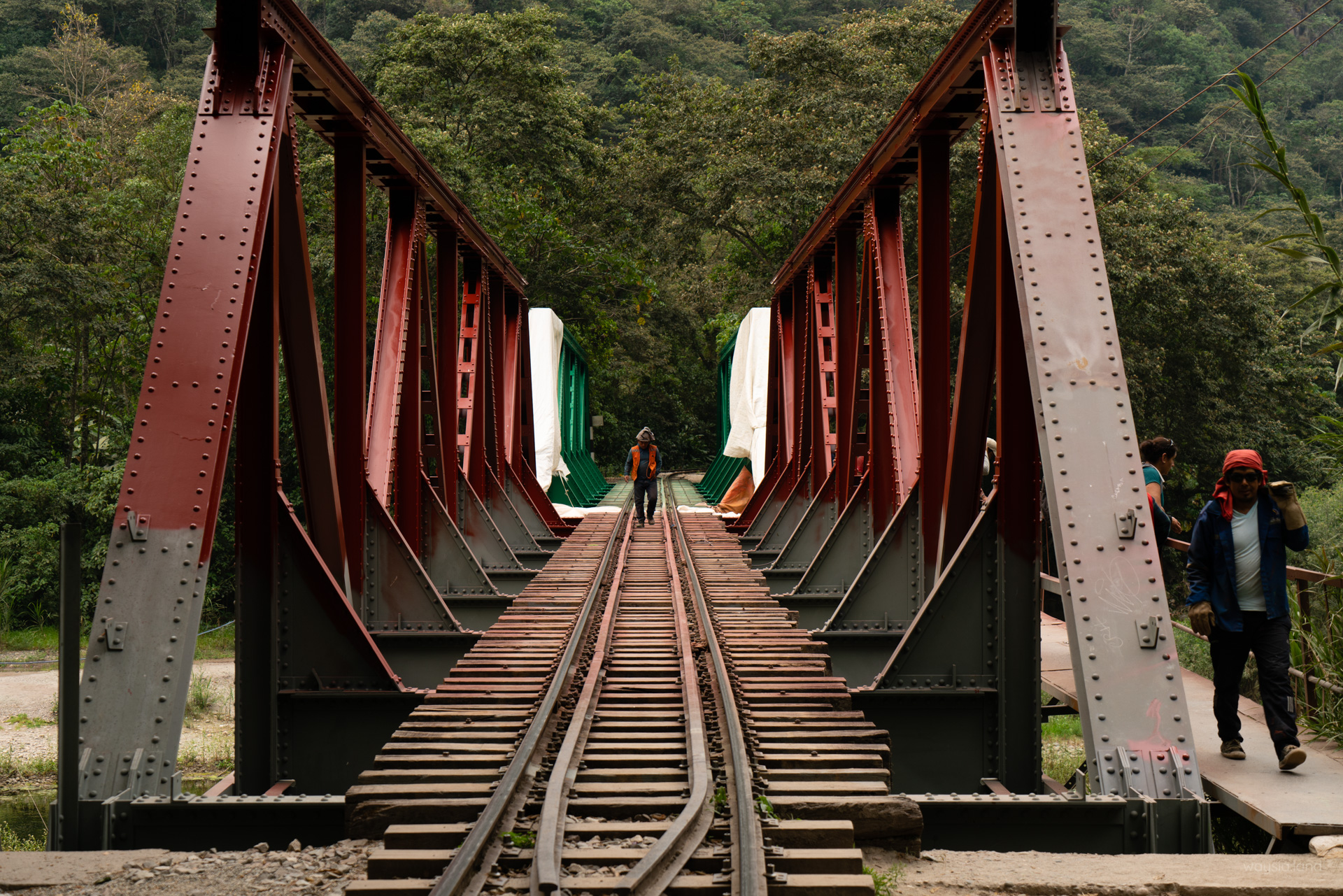
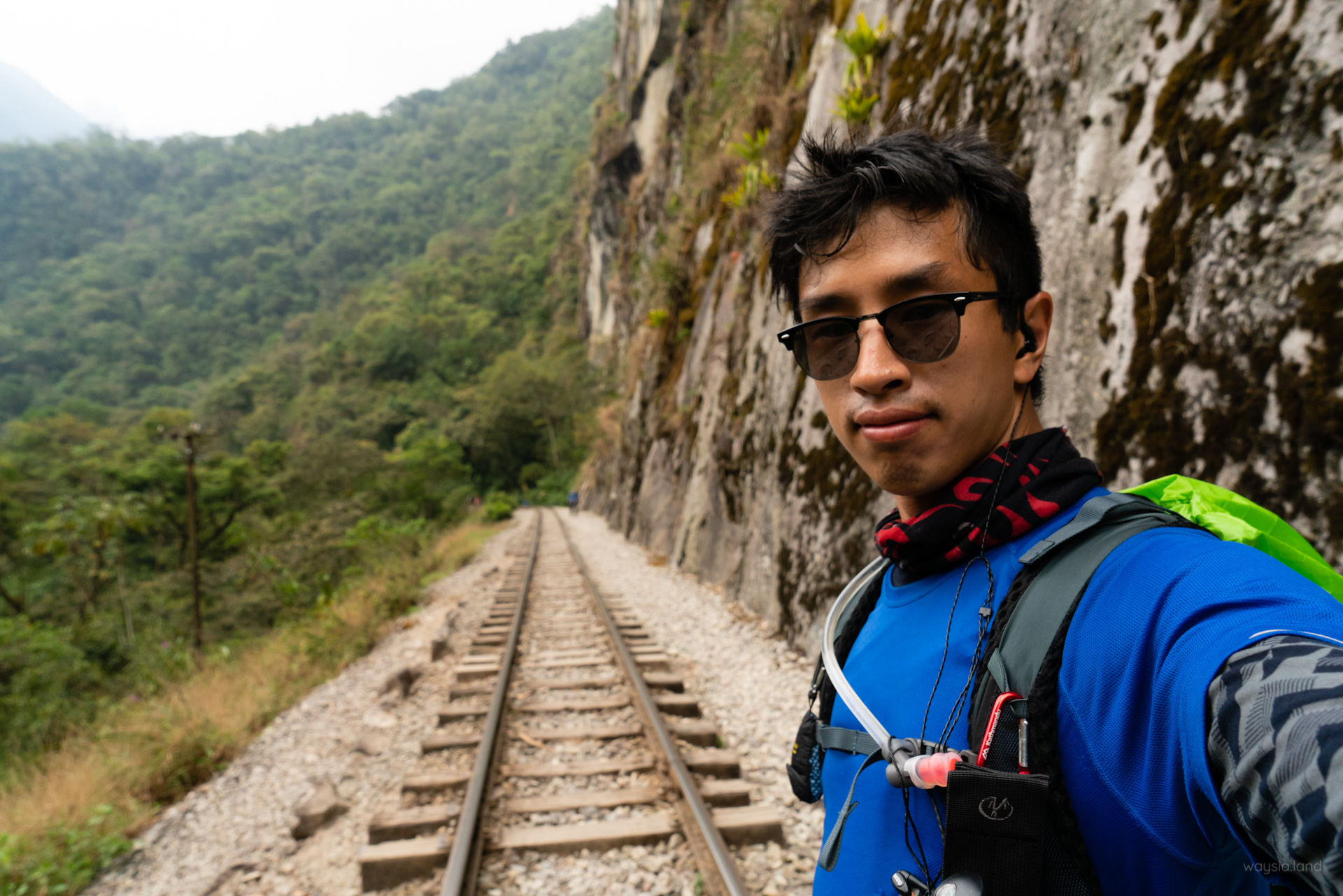
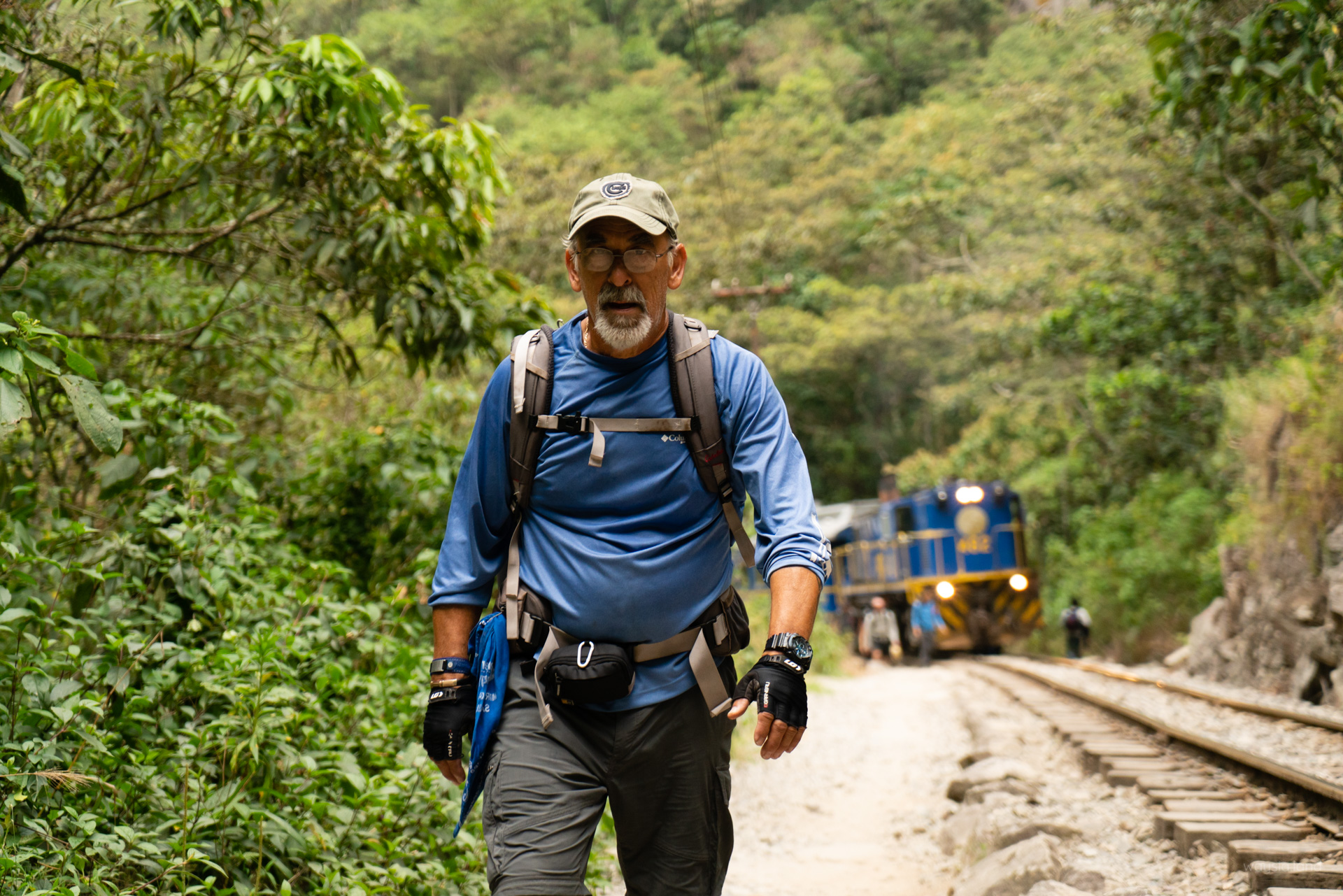
Eventually, we had made it. Trekking around 70Km all the way from beyond the savage Salkantay Mountain to the town of Aguas Caliente nestled at the base of the legendary Machu Picchu.
Civilisation.
Wifi*, restaurants, hot showers, huge bed and fluffy towels – everything you could want.
*Some campsites actually had wifi but I went for the more immersive route.
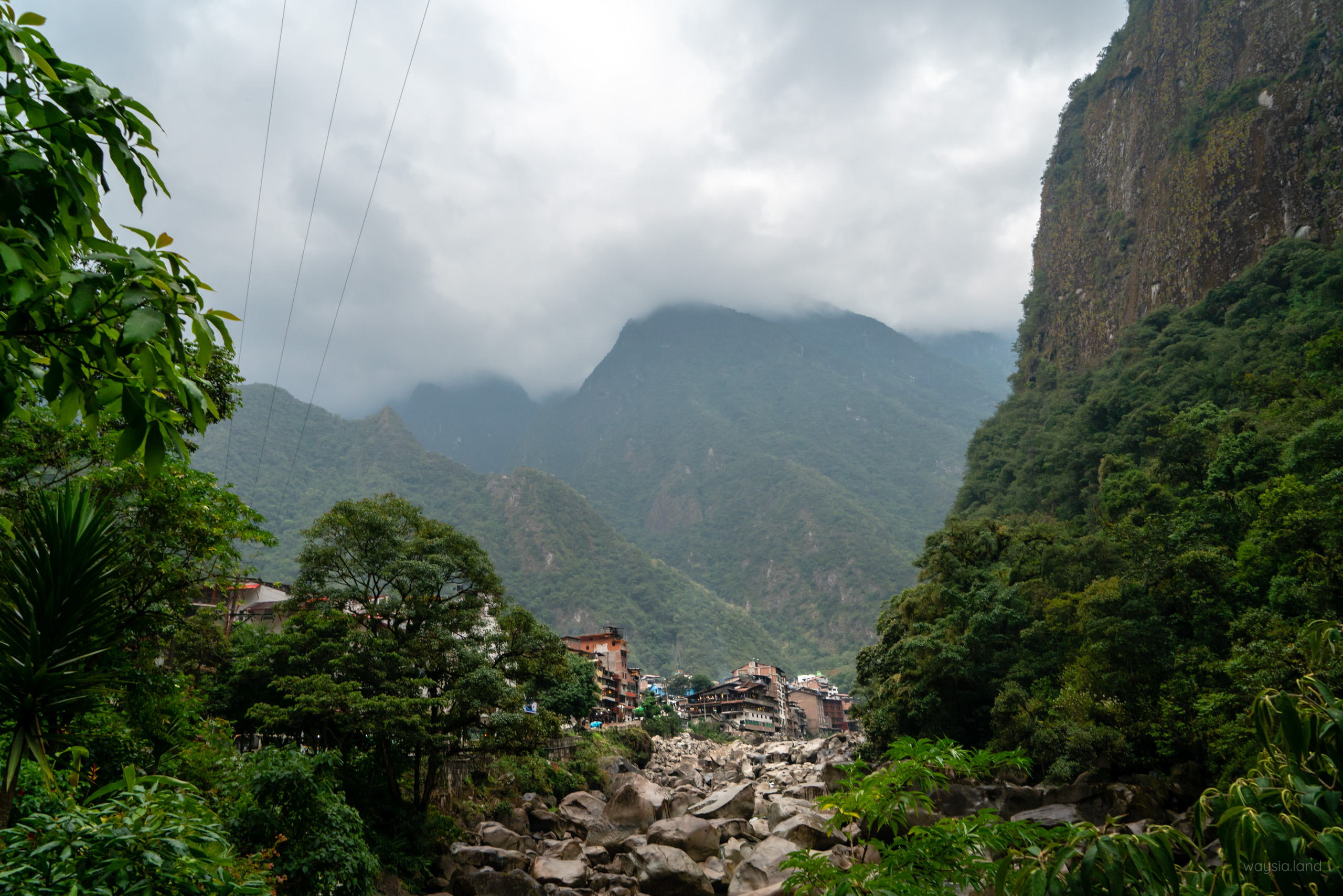
With the camping portion now over, it was time to celebrate. As part of the tour, we had been given the very nice Santuario Hotel for the night. Despite the fact that we still had to get up to Machu Picchu itself and I still had to complete the optional Machu Picchu Mountain hike (3hr return), this felt like the ending.
The 1hr or so long shower and fluffy towels may have contributed to this feeling.
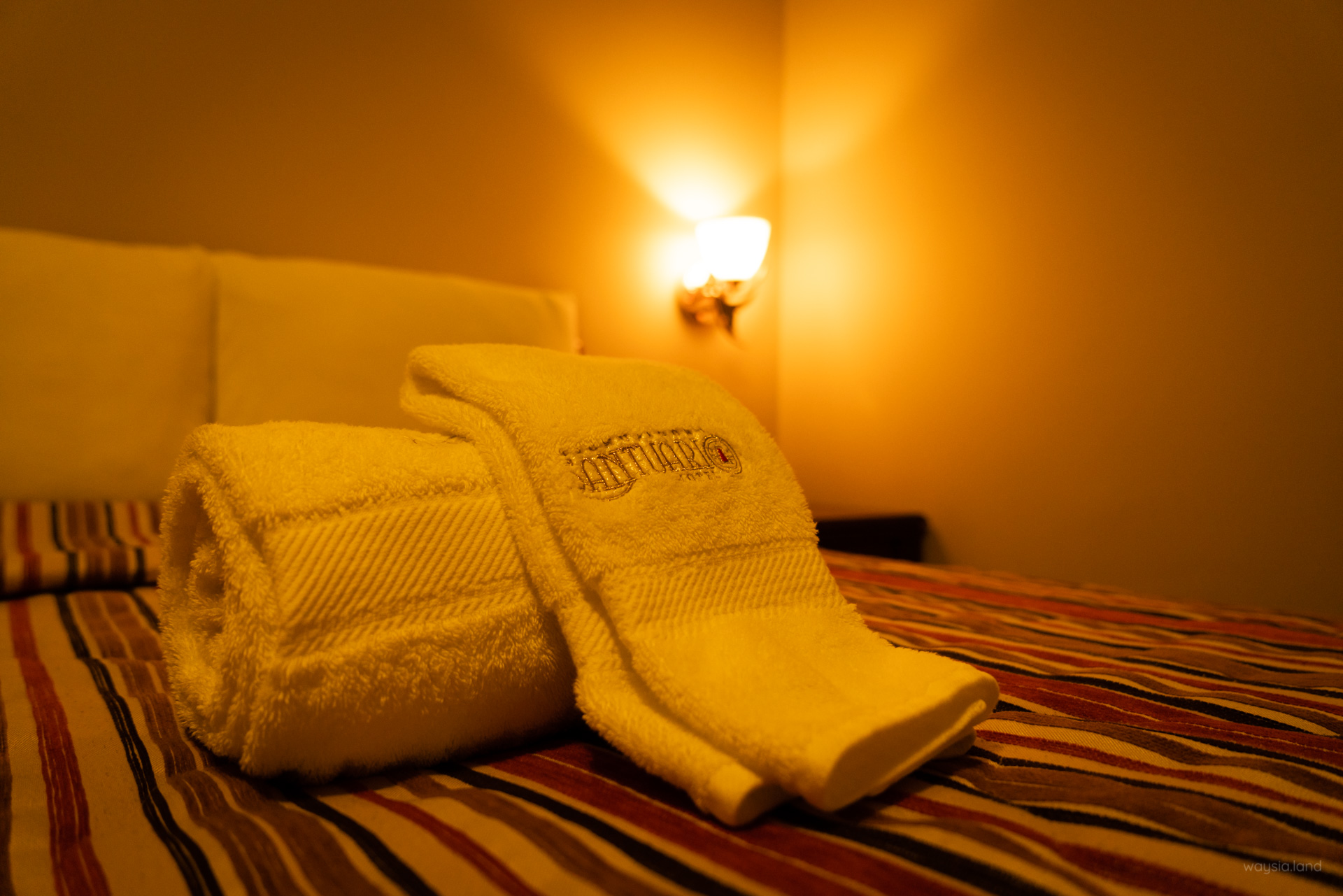
Machu Picchu – Day 5 of the Salkantay Trek
…its 4.30am… bus line to Machu Picchu is moving… we are without tickets.
“Where the hell is our guide!?”
Machu Picchu deserves its own separate post. To read the story click here.
